Similar Posts
Between 2016 and 2018 I created a series of wall paintings with scenes from the Old Testament for the exterior walls of a chapel in Dordogne, France. The chapel is located in the Orthodox Monastery of the Transfiguration which was founded by Archimandrite Elie and is a dependency of the Monastery of Simonos Petras on Mount Athos. The murals, representing several biblical passages, are painted as a frieze starting from the south side of the chapel, encircling the whole, and ending at the western front with three panels surrounding the entrance.
The text which follows is a spiritual commentary on the murals. Whoever witnesses the iconography experiences both the creativity and the tradition that is anchored in the Church.
A few words on the conception and realization of the project
The total surface of the frieze is approximately 35m2. The height is 1.2m and the total length is approximately 31 linear meters. In addition, there are three panels that surround the entrance to the chapel.
As is quite common with exterior wall paintings and decorations, the placement and arrangement of this frieze cannot be seen as a whole. With respect to the chapel, it is necessary to circumambulate it in order to attain a complete view. A unique feature is that the iconography is placed on the outside of the building where the adjacent visual surfaces are the roof and at some points the sky rather than the ceiling. In addition, the natural lighting conditions vary according to the season, changing the external luminous colors and shapes.
The iconography of the biblical scenes is based on in-depth research into various models created by the Tradition of the Church. Frescoes and mosaics from the Monastery of Hossios Loukas in Greece (11th and 12th centuries) as well as the Menologion of Basil II inspired the stylization of the work.
I created new iconographic compositions from the ancient models. It is important to remember that a creative iconographer needs to respect the “rules” or “canons” instituted by the Church, because it is the canon that preserves and guarantees the authenticity of the message transmitted by the Orthodox Church. With these comments, I underline here the paradoxical character of iconographic creativity, in which every icon conforming to the canons of the Church, is in fact a real creation or a re-creation of a model.
The technical realization of this project happened in several stages. Each scene was drawn on paper at a reduced size and was then projected onto the wall of the chapel at the intended location. Finally, the projected image was redrawn after integrating all necessary modifications.
Because of the technical difficulties of painting on the exterior of a building, it was important to select paint that is durable and resistant to the fluctuations of temperature and climate. The German paints KEIM were chosen for their durability and special technical properties. It is a product that solidifies as it is bonded to the prepared surface and does not need to be protected by any varnish. The following images show the possibilities when working with Keim paint.
It is important to remember that all stages of the work, preparing the surface, building the scaffolding, protecting the site from rain or sun and more, required much collaboration. This project would not have been possible without the assistance of a group of inspired helpers.
The Iconographic Program
The iconographic arrangement on the frieze of the chapel constitutes a series of scenes from the Old Testament, the layout of which does not reflect the chronological order of the biblical stories. This point must be emphasized. It is not a series of illustrations of a pedagogical nature. Rather, the project portrays a selection of events that should cause the observer to reflect on the Old Testament theophanies (revelations of God) that He used to bring His people to salvation. The iconographic function of the paintings is to manifest the Divine Presence.
The texts of the Old Testament are the foundation, the basis upon which the revelation of the New Testament is built. This is an approach practiced in the Orthodox Tradition. That is, each person, each thing, and each biblical event, is understood as the shadow of things to come; they prefigure Christ and His earthly mission of salvation, His revelation in a hidden manner.
The arrangement of the scenes on the frieze of the exterior of the chapel evokes a symbolic image, that of a crown embellished with precious stones. Each stone is unique, yet its brilliance cannot be appreciated without its relationship to the gems that surround it. Like a stone that shines with thousands of facets, each biblical scene can be contemplated in its uniqueness. Yet, it can also be appreciated as a mysterious link established between each scene.
Throughout the whole of the Bible the word of God manifests itself. The same divine breath passes from the Book of Genesis to the Book of Revelation. Even if the authors of the books differentiate themselves by their contrasting personalities—Isaiah, Hosea, David, John or Paul—they mutually respond to each other and clarify each other because it is the same Spirit of God that animates them. This unity and agreement are established between the various panels.
Brief enumeration of the Biblical scenes
The iconographic arrangement begins on the south side of the chapel and continues on to the walls of the east side which form the sanctuary. It then carries on to the north side before drawing to a close on the west face of the chapel with three panels of icons surrounding the entrance. It is important to note that the circular movement of the layout, starting from the south and going towards the north, represents the movement of liturgical processions.
On the south side, the first and second panels refer to the beginning of the Book of Genesis and depict the Creation of the World, the Creation of Eve, the Expulsion of Adam and Eve from Paradise, Cain Killing Abel, the Patriarch Seth, Noah and the Ark, and Noah Planting the Vine.
The third panel is dedicated to Moses guiding the Hebrew people in their passage through the Red Sea as told in the Book of Exodus, the figure of Moses is prominent.
Above the door of the sanctuary are depicted the Bearers of the Vine Cluster. To the right of the door is the Appearance of the Angel of the Lord to Barlaam who is seated on his donkey. Both events are told in the Book of Numbers.
The great Moses is seen again on the angle of the sanctuary wall, striking the rock and receiving the Tables of the Law. The following scene represents Moses and Aaron officiating as celebrants in the Tent of Witness. These events are described in the Book of Exodus.
On the east side of the chapel in the exact axis of the sanctuary, the Hospitality of Abraham from the Book of Genesis is depicted.
On the northeast side and the beginning of the north side of the chapel, three scenes from the Book of Kings are represented: the Sacrifice of Elijah on Mount Carmel, the Ascent of Elijah in the Chariot of Fire, and the Healing of Naaman by the Prophet Elisha and the axe that was found. Above one of the windows of the sanctuary, the Three Children in the Furnace from the Book of Daniel are presented.
On the middle of the north wall of the chapel, three episodes from the Book of Joshua are depicted: the Passage of the Ark over the Jordan, Rahab and the Spies in the City of Jericho, and the Appearance of the Angel to Joshua, the Son of Nun. These are followed by the Prophet Hosea from the Book of Hosea and the Repentance of King David from the Book of Samuel.
The north wall ends with a scene from the Book of Daniel, Daniel in the Lion’s Den and one from the Book of Ezekiel, the Vision of Ezekiel.
On the west side of the chapel, three panels are arranged around the entrance. To the left, the Ladder of Jacob from the Book of Genesis is depicted; to the right, Jonah Coming Out of the Sea Monster from the Book of Jonah is presented. An icon of the Holy Face of Christ situated on a tile between two torchlights adorns the third panel above the entrance door.
Commentary on selected compositions
The general commentary on this iconographic arrangement starts with the first panel situated on the south side of the chapel and will be followed by explanations of selected panels. The last part of the presentation will concentrate on the three scenes on the front of the chapel which form a synthesis of the fundamental axis of spiritual life as it is revealed in the scripture readings of the Old Testament.
SOUTH 1 – GENESIS
Creation of heaven and earth (Gen 1:1)
Creation of Eve (Gen 2:21-25) – the Fall (Gen 3:23-24)
At the top left, the Creation of the World is presented as told in the first verses of Genesis: “In the beginning God created heaven and earth” (Gen 1:1). The Creator is depicted as an old man with a beard and white hair. It is God from before the ages, Christ Who has the name “Ancient of Days”. Ancient of Days represents Jesus Christ, the Lord of all eternity and the “image of the Father”. According to the word of the Lord to Philip: “He who has seen Me has seen the Father” (Jn 14:9). The Tradition of the Church teaches that the manifestations of God in the Old Testament are always of the Word of God because God the Father stays invisible for all eternity. Below this composition, there is an image of the original chaos, “the earth without form and void” (Gen 1:2).
At the top on the right, the Creation of Woman is presented: Christ-God, holding Eve’s hand, takes her out of Adam’s side (Gen 2:21-25). Adam is lying down near a fig tree which symbolizes Paradise. Although God the Creator is represented in the form of Christ, God is never divided, as the Three Persons of the Holy Trinity all act according to the word of Christ: “The Father and I, we are one” (Jn 10:30). For this reason, in the iconographic tradition, Christ fashions the first couple of humanity.
Further down, in the corner, a slithering serpent is a reminder of the sin of Adam and Eve. To the right at the bottom of the scene, a fiery cherubim armed with a sword guards the entrance to Paradise. The sculpted porch through which the couple walks signifies their exile from the Garden of Eden (Gen 3:23-24). They have lost their first garment, the light of glory, which depicted their full communion with God. Now, they are dressed in garments of skin (Gen 3:21) which represent the grip of sin on humanity after the Fall and express their mortal state. Each holds a tool, Adam an axe and Eve a spindle, symbols of their new life in a fallen and hostile world.
SOUTH 2 – GENESIS
The killing of Abel by Cain (Gen 4:1-16) – The Patriarch Seth (Gen 5:3), The Flood (Gen 6:7,8) – Noah planting a vine (Gen 9:20)
Man’s exile from Paradise marks the start of a long period of wandering. The tragic consequences of the first sin manifest themselves in the lives of the sons of Adam and Eve, Cain and Abel. Consumed by hate and jealousy, Cain savagely kills his brother Abel. This murder is presented at the beginning of the second panel. In the middle of the panel, the hierarchic figure of Patriarch Seth rises up as a witness and intercessor in front of God for sinful humanity. In spite of sin, all is not lost in the lineage of Adam. The presence of a ‘witness’ of God, Adam’s third son, Patriarch Seth, through the straightness of his life, incarnates hope in the continuity and development of the human race.
To the left of Seth, two events from the life of Noah are presented. The top of the panel depicts a dove bringing an olive branch to Noah who is inside the Ark. Further down, Noah is pruning a vine covered with grapes which surround a small window in the nave of the chapel.
Many biblical passages teach about alliances between God and men. It is never an automatic arrangement as it is essential to be founded on freedom and love. When men turn away from God because of their indifference or their sins, God presents signs so that they change their attitude. Often the voice of prophets, who have been given this mission, is heard. Even when a situation seems blocked, God does not hesitate to employ various means to bestow His mercy on men or to warn them of the perils that threaten them.
Thus it was with Noah, a just man who had faith and confidence in God (Gen 6:9 and Heb 11:7) and who lived at a time when there was great decadence in the lives of the people. After he was saved from the Flood, Noah received the sign of a dove and an olive branch and restarted the long chain of alliances between God and man.
Leaving the Ark, Noah engaged in cultivating the earth and planted a vine which signified an important turn for the human condition. The earth was renewed and fertile. The vine’s symbolic strength passes throughout the Bible (Is 5:1, Jn 15:5). Both are ‘consolations’ prefiguring the final consolation which comes with Christ. Through his sons, Sem, Sam and Japhet, Noah became the father of the new humanity (Gen 6:9-10).
SOUTH 4 (RIGHT) – NUMBERS
Balaam and his donkey in front of the Angel of God (Num 22:1-35)
The Lord does not hesitate to contact people through signs and strange phenomena in order to put them back onto the path of salvation. For example, He guided the Hebrew people with a pillar of cloud by day and a pillar of fire by night in their escape from Egypt (Ex 13:21).
Certain laws of nature are broken in the story of the diviner Balaam who was brutally confused by a speaking donkey. This event is presented on the fourth panel on the south side of the chapel, next to the door leading to the sanctuary. Perched on his donkey, Balaam was on a mission for King Moab to bring cases against the Israelite people. The Lord, wanting to protect His people, put His Angel equipped with a sword in front of him to block the way and cause him to analyze his actions. The donkey, who had seen the Angel, disobeyed his master three times and started to speak at the moment his master was about to hit him.
At this instant, God opened Balaam’s eyes so he could see the Angel of the Lord who was standing in the way. Overcome by fear and indisposed, the divine, suddenly realizing his state of sin and blindness (Num 22:31,34), humbly prostrated himself before the angelic apparition. His spiritual eyes open, Balaam now totally devoted himself to the Lord and became a real prophet. One of his oracles (or parables according to the Septuagint): “A star shall come forth out of Jacob” (Num 24:17-19), traveled through the centuries until the Magi of the East gave homage to Christ, newly-born in Bethlehem. The Tradition of the Church interprets this oracle as the announcement of the Incarnation of God, the birth of the Messiah (Cf. Mt 2:1-2). Therefore, Balaam is seen as an image of repentance and his donkey, who was given speech, as an image of the action of the Holy Spirit who transforms all creatures, humans as well as animals.
NORTH-EAST – THE BOOK OF KINGS
Elijah/The sacrifice on Carmel (1 Kings 18:20-40)
In the Bible, there are intense times and privileged moments when God manifests Himself visibly to certain elected men and calls them to transmit a message. The scene on one of the panels of the northeast side of the chapel presents King Ahab at the summit of Mount Carmel in the presence of Prophet Elijah and four hundred and fifty priests of Baal. Elijah, in his desire to save the people of Israel who were plunged into idolatry and to reveal to them the strength of the Spirit of God, organized a sacrifice in the form of a contest between the two groups. On one side were Elijah himself and the people of Israel protected by God. On the other side were King Ahab, the four hundred and fifty priests and the followers of Baal. God did not delay in responding to the earnest prayer of Prophet Elijah: “Answer me, Yahweh, answer me so that this people knows that it is You, Yahweh, who is God and who converts their hearts!” (1 Kings 18:37). And fire descended on the altar consuming the offering and absorbing all the water poured around it. Seeing this miracle, the people present were filled with wonder and prostrated themselves in front of the God of Israel.
At the center of the panel is a huge red flame that comes out of a blue semicircle that symbolizes the Divine Presence. It descends onto the sacrifice until it reaches the water in the channel that surrounds the base of the altar built on twelve pillars. The four jars of water that have been poured three times at the command of Elijah are standing at the four corners of the altar (1 Kings 18:34-36). To the left, Prophet Elijah raises his hands to heaven in a gesture of prayer. His hierarchical and solemn attitude contrasts strongly with that of the priests of Baal who are represented to the right. They move violently around the idol of an ox placed on the top of a column. In the foreground, a priest sacrifices a calf, cutting the veins to make blood flow in order to receive clemency from Baal.
The biblical account of the Sacrifice of Elijah on Mount Carmel presents the many obstacles that exist before one arrives at knowledge of the real God. An alliance with the Lord cannot be established in a heart inhabited by idols, a heart divided into pieces. It is exactly the renunciation of idols that constitutes the foundation of Baptism and the beginning of a Christian spiritual life in which the whole person is illuminated by the Holy Spirit. For St. Macarius the Great, the immense flame represents the illumination of Baptism (see homily 31,5). It symbolizes the descent of the Holy Spirit onto the newly-baptized one who has renounced the darkness of impiety and idolatry. Now, the “material” sacrifice of a young calf in the Old Testament is replaced by the spiritual sacrifice of body and soul that each Christian offers to the Lord. The body is cleansed by the water and the sins are consumed by the Divine fire of the Holy Spirit. A new life in the light of the Spirit begins in the Church and is nourished by the Sacraments.
NORTH 12 – HOSEA
The prophet Hosea, the roaring lion (Hos 11:10) and the vine
At the center of the spiritual combat for knowledge of the true God stands the figure of Prophet Hosea whose message sheds a new light on the nature of Divine love. Prophet Hosea is presented on the north side of the chapel on a small section of the wall that is pierced by a window of the nave. Upright, next to a majestic cypress tree, he indicates with his right hand a tame lion in the center of a vine loaded with grapes.
The content of the Book of Hosea is about the patience of the Lord who relentlessly awaits the return of His people. If the people often get lost, if their forgetfulness of the Lord makes them walk aimlessly in the desert of solitude and indifference; God, nevertheless, remains immovable and faithful. Prophet Hosea is the first of the prophets who compares God’s love for His people to conjugal human love lived within the bond of marriage. It is the long tale of suffering felt by a husband facing his adulterous wife. Prophet Hosea did not hesitate to cultivate the image of a husband in love, ready to forgive the unfaithful one.
In fact, nothing is more elevated or precious than Divine mercy and no sacrifice is sufficient to obtain it. As the Lord declares in the Book of Hosea: “For I desire steadfast love and not sacrifice, the knowledge of God, rather than burnt offerings” (Hos 6:6). This word will be expressed by Christ speaking to the Pharisees at the moment they reproach Him for sharing His meal with Publicans and sinners. In this way, Christ signifies that the real reason for His earthly mission is to call all sinners to Himself without excluding anyone (Mt 9:13).
Continuing with the metaphor of the people of Israel and the husband, Prophet Hosea announces a new alliance between God and His people at the moment the wife returns to her husband. The couple is renewed: God/husband and the people of Israel/wife will reign at the center of a restored creation, like Adam and Eve before the Fall. Now, the vine is reminiscent of the vine Noah planted after the flood as a sign of the fertility of the earth and of an alliance with God. The “ever-green cypress tree” is a symbol of the Lord Himself: “I am like an ever-green cypress tree” (Hos 14:9). In addition, the imposing silhouette and evergreen of the cypress tree have always been considered symbols of eternal life. Images of the vine, the cypress tree, and the wild animals are abundant in the Book of Hosea. They acquire symbolic meaning and aim to express peace and newly-found unity between God and Israel.
This is particularly true for the lion who takes on a very rich symbolic and spiritual symbolism in the Book of Hosea. In the beginning, the lion is presented as a fierce and wild animal (Hos 13:7), and little by little evolves into a figure of Divine mercy. Initially, a roaring wild beast, the lion/Yahweh takes on the role of a guide calling all the lost peoples to assemble in Israel (Hos 11:19).
Prophet Hosea will go even further in witnessing the insatiable love of God for His people. In this verse from the Book of Hosea: “O death where is thy sting, where is thy victory?” (Hos 13:14) we enter directly into the mystery of the Resurrection of Christ. This verse is interpreted by St Paul and after him by the Fathers of the Church as the victory of Christ on the Cross. The Church proclaims solemnly on Easter night: “Hell seized a body and found himself in front of God; he seized earth and he encountered heaven; he seized that which is visible and he fell in that which is invisible. O Death where is thy sting, hell, where is thy victory? Christ is risen and you are overthrown”. Therefore, it is the announcement of the Resurrection of Christ which is at the heart of the Book of Hosea. Through the recounting of the unhappy love of his hero, Prophet Hosea announces the strength of the love of God for men and Christ’s ultimate fight and victory on the Cross in order to liberate humanity from the domination of death.
NORTH 12 – DAVID
The repentance of King David – Bathsheba- Nathan (2 Sam 11:12 and Psalm 50)
Seized by the gravity of the sin he had committed, David expressed his repentance through supplications in the form of poems addressed to God. These spiritual poems, the psalms, have come down to us and are at the heart of Christian prayer. Especially significant is Psalm 50, which reveals the grandeur of David’s repentance: “Have mercy upon me, O Lord, according to Thy great mercy and in Thy great compassion, free me from my sin (…) Give me the joy of Thy salvation and strengthen me by Thy Holy Spirit”. David was forgiven. According to the prophecy of Nathan, the first son conceived through David’s union with Bathsheba died very young. Later, a second son, Solomon, was born whose reign was glorious.
Echoing the verses of Psalm 50 are the words of the great prophet, John the Baptist, as quoted in the Gospel of St Matthew: “Repent, for the Kingdom of Heaven is at hand” (Mt 3:2). From now on, repentance is the only way to access the real spiritual kingdom. The earthly kingdom of the two great rulers, David and Solomon, is the image of the eternal kingdom where God Himself is the King. The reestablishment of this new relationship to God is a sign of deep spiritual healing in synergy with the Holy Spirit. It is this same Spirit Who animated the prophets to witness unendingly to God’s love for man.
The two panels dedicated to Prophet Hosea and David bear witness to the complex and mysterious union between God and man on a level both collective and personal which forms the heart of the Bible. Here, God is not only He who can only be approached by a few, either at the end of a long preparation or through extraordinary happenings like those of Moses and Elijah. He is also a God who is patient and waits incessantly for the sinner, trying to hasten his return, as revealed by Prophet Hosea. Or as with King David, He is approached through repentance, through a deep movement of the heart.
Commentaries on the paintings on the axis east-west sides of the chapel
Two paintings are situated on the east-west axis of the chapel. The axis runs through the chapel, establishing an invisible line from the sanctuary to the east and the entrance on the west. The painting on the east wall of the sanctuary depicts three guests represented by angels seated for a meal served by Abraham and Sarah. This scene is called the Hospitality of Abraham. The painting on the west wall above the entrance door depicts the Holy Face. A spiritual relationship is established between these two scenes and will be discussed in the theological commentary on the Hospitality of Abraham.
First, however, the iconographic arrangement on the west side of the chapel must be viewed in its totality. The Holy Face on a tile is situated above the entrance door. The two panels on either side of the entrance depict Jacob’s Ladder and Prophet Jonah spewed forth by the sea monster. The following commentaries on these panels reveal how each of these scenes is related to the foundations of the Christian faith.
The story of Prophet Jonah refers to the Resurrection of Christ and to the Sacrament of Baptism. Jacob’s Ladder refers to the Incarnation of our Savior. They are the two extremes of the same mystery and a third mystery joins them above the door: the Holy Face of Christ Whose ineffable presence stands in the center of the Christian mystery. From the beginning of creation, man has searched for God and has desired to see His Face, as the psalms of Prophet David bear witness. Thus, these three panels symbolize the three poles of the Christian faith: the Incarnation, the Resurrection, and the Apocalypse.
WEST 15 (RIGHT) – JONAH
Jonah emerging from the sea monster (Jon 1:3) Prefiguration of the Resurrection of Christ
In the Biblical story, Prophet Jonah received an order from God to go and preach repentance to the inhabitants of Nineveh or they would be destroyed. Wanting to escape the will of God, Jonah took to the sea in a boat going in the opposite direction. During a violent storm in which it was revealed that he was the cause of the tempest, his shipmates threw him overboard and he was swallowed by a great fish. Jonah miraculously remained alive inside the stomach of the fish for three days and three nights. When he made an ardent supplication to the Lord to be saved (Jon 2:3-10), God ordered the sea monster to spew him forth onto the shore and told him to execute his mission as quickly as possible to the inhabitants of Nineveh. The conversion of the Ninevites was so strong that God did not destroy the city, and Prophet Jonah, feeling sorry for himself, retired far into the desert. During one night, God, in His goodness, made a plant grow over the prophet to protect him from the rays of the sun. Yet, in the morning by a Divine command, the plant was attacked by a worm and dried up leaving Jonah exhausted by the heat and more than ever full of complaints against God. The story ends with a dialogue between the Lord and Prophet Jonah in which the Divine mercy towards all humans without any exception is particularly emphasized.
The story of Jonah is presented on the panel to the right of the door with superimposed scenes showing Prophet Jonah, the sea monster, Nineveh and the plant. This type of arrangement is characteristic of iconographic language which searches to express the divine transcendence which surpasses time and space. Prophet Jonah being spewed out of the mouth of the sea monster occupies the center of the scene. At the bottom to the left is the city of Nineveh surrounded by walls. At the top corner on the right, a Divine hand comes out of the arch of a circle and blesses the whole. Above the head of Prophet Jonah, a plant with marrows spreads itself above him like a huge umbrella.
The story of the miraculous expulsion of Prophet Jonah by the sea monster occupies a significant position in the Tradition of the Orthodox Church. St Ireneaus of Lyon saw the great fish as a figure of Satan, similar to the serpent that caused the fall of Adam and Eve. With this interpretation, dwelling in the belly of the sea monster is likened to the spiritual death of the sinner who can only be delivered by intense prayer addressed to God. The Fathers of the Church saw the figure of Christ in Prophet Jonah and referred to the words of Jesus to the scribes and Pharisees: “As Jonah was in the belly of the sea monster for three days and three nights, so shall the Son of Man be in the heart of the earth for three days and three nights” (Mt 12:40, 16:4). With this declaration, Jesus announced His Resurrection from the tomb after spending three days and three nights in the depths of hell. The risen Lord’s strength vanquishes humanity’s worst enemy, death, symbolized here by the sea monster in the story of Jonah.
The inhabitants of Nineveh did not oppose the warning of the prophet, but, concerned for their salvation, obeyed his preaching immediately. They turned to God aware of the seriousness of their sins. The depth of their repentance is presented as a model for all. The book of Jonah highlights the solicitude of God toward all men and His concern for their salvation. One can affirm that Christ is the “real Jonah” Whose Incarnation was for the salvation of all men. He came to earth to preach His word to the Apostles and to their successors.
Jonah resting in the shade of the plant is an ancient Christian image that is often represented on the walls of the catacombs or carved on ancient Christian sarcophagi. The figure of Jonah lying under the plant represents the other side of death, the hope of a peaceful resting place in a lush paradise. For the Christian, the plant becomes a symbol of the place “of peace and freshness”, words that are sung in the Church during the funeral service.
Furthermore, this represents another moment in time: God’s patience waiting for the conversion of hearts. Here, the image of Jonah lying under the plant expresses the resting of the Christian in the tomb, waiting for the Last Judgment; because death is above all a time of waiting for the future general Resurrection. On the icon of Easter, we see Jonah/Christ descending into the nethermost parts of the earth in order to raise up all humanity for the final Resurrection.
WEST 14 (LEFT) – JACOB
The Ladder of Jacob (Gen 28, 10-22)
The prophetical announcement of the mystery of the incarnation
The composition on the panel to the left of the door presents an episode in the life of Patriarch Jacob, the son of Isaac, and the grandson of Abraham. Stopping in his journey toward Haran, Jacob lay down and fell asleep with a stone as a pillow. In his sleep, he dreamed and saw a ladder reaching from earth to heaven with angels of God climbing up and down the rungs. God stood in front of him and renewed His promise to his ancestors, Abraham and Isaac, giving them an inheritance of land. Upon awakening, Jacob, full of fear at the memory of the Divine Presence, took the stone that had served as his pillow and, putting it upright, poured oil over it. Thereby, he consecrated this high place and called it Bethel, “the house of God”. He also made a promise to serve God from Whom he asked protection for the rest of his journey.
On the panel, Jacob is asleep and above him there is a ladder stretching from top to bottom with angels ascending and descending with unfolded wings. There is a mountain at the bottom of the ladder while the top ends in the heavens. The Mother of God, holding her Son, appears inside a quarter circle of shades of blue which symbolizes heaven. Near the feet of the sleeping Jacob, a small amphora containing unction hangs from the branch of a small bush.
In an ancient tradition, the ascending and descending angels symbolize exchanges between God and humanity: the angels climb up to heaven carrying the prayers of men to God, and they climb down to earth transmitting gifts and messages from God to men. Later, Christ refers to this event, giving it a theological and mystical meaning. In His meeting with Philip and Nathanael, Jesus declares, “Verily, verily, from now on you shall see the heavens open and the angels of God ascending and descending on the Son of man” (Jn 1:51). This word implies that it is the presence of Christ Himself on earth that “opens the heaven” permitting Divine grace to circulate between heaven and earth. Observing the incessant coming and going of the angels, Jacob was the witness of an authentic theophany. Later, the incarnate Christ will be the real Ladder Who unites heaven and earth before returning to His Father.
The Bible story tells us that early the next morning Jacob poured oil on the stone which served as his pillow. Filled with awe, he exclaimed: “What a fearful place! This is nothing less than the house of God and the door to heaven!” The Old Testament mentions many rituals using unction which later became acts of consecration for Christians. This place where Jacob slept was fearsome as it was totally penetrated by Divine grace. From this time, even before Christ revealed Himself, the consecrated stone became the altar of the Divine Presence, a real temple and a real dwelling place of God.
Many presentations of Jacob’s dream show an image of the Mother of God at the top of the ladder. The presence of the Mother of God in this place holds great theological and mystical meaning for it is in her that the mystery of the Incarnation is fulfilled. In her, the Son of God takes flesh and comes down from heaven to live among men. In her, heaven and earth are united. Thus, the Church sees Jacob’s dream as the prefiguration of the Incarnation and Divine maternity and proclaims in the Akathist hymn sung to the Mother of God during Great Lent: “Rejoice, heavenly ladder through which God has descended; rejoice bridge between heaven and earth.”
WEST 16 (CENTER) – THE KERAMIDION
or Holy Face on a tile
The Psalms, the Gospels (Mk 14:58, Jn 1:18, Jn 14:9)
The panel situated above the entrance to the chapel encircles the rounded top of the doors. In its center is the figure of the Holy Face of Christ placed between two torches. The Face of the Lord, surrounded by the cruciform halo, is painted with the eyes wide-open. He is superimposed on a unified red surface, slightly shaded, which signifies a brick or tile.
According to Tradition, the original icon was created during the Lord’s life on earth and its supernatural origin gives healing to those who venerate it. In the Orthodox Church, it is called an “image not made by hands”. In the West, this image is called “the Holy Face”.
Several written sources relate the miracle of an “image not made by human hands”. They tell that when He was unable to go to the ailing King Abgar of Edessa, the Savior made a miraculous impression of His Face on a piece of cloth which was sent to the king. As a result, the king was healed. The stories also mention that in the following centuries during the turbulent history of the town of Edessa, a miraculous impression of the Holy Face “not made by the hand of man” existed on a tile or brick.
The Face imprinted on the tile contains the whole history of the salvation of man accomplished by Christ as presented from the Book of Genesis to the Book of the Apocalypse. From their beginning, the people of the Bible ardently desired to see the Face of God because it was for them the source of strength and consolation.
As the psalmist writes:
Thou hast said, “Seek ye my face.”
My heart says to thee,
“Thy face, Lord, do I seek.”
Hide not thy face from me (Psalm 27).
This icon is the theological and spiritual summit of all the paintings that adorn the chapel. It contains the mystery of God-Man: of God Who made Himself Man in order to be seen, of Jesus Christ Who became incarnate to show men the way to union with Him. The Face, so fervently desired by the men of the Bible, miraculously appeared to Christians imprinted on a tile without the help of a painter or any other human means. It is the case of a mystery revealing the deep relationship between the God of the Old Testament and Jesus Christ, the Second Person of the Trinity, Who made Himself incarnate and visible.
EAST 7 – ABRAHAM
Hospitality of Abraham (Gen 18:1-16)
As mentioned above, the Holy Face, situated above the entrance door on the west side is in axial correspondence to the icon of the Hospitality of Abraham situated on the east end of the chapel. The scene relates a moment in the life of Patriarch Abraham who at the time was 99 years of age.
As Patriarch Abraham rested at the entrance to his tent near the oak of Mamre, he saw three unknown travelers coming toward him. Desiring to offer them hospitality, he served them a meal which he and his wife, Sarah, prepared. At the end of the meal, one of the strangers announced to the old patriarch that a son would be born to him the following year. Afterward, the three mysterious guests left going in the direction of Sodom accompanied by Abraham who interceded in favor of the town and was heard by God. This episode in the Bible is called the “Hospitality of Abraham”.
The icon is arranged around a small central window located just above the Holy Table in the chapel’s sanctuary. Three men with wings and the staffs of messengers, that is, three majestic angels, sit in front of a table covered with a white tablecloth. With great respect, Patriarch Abraham and Sarah serve the dishes of the meal that are painted at the bottom of the composition. To the right, Sarah carries a bread loaf baked with three measures of flour (Gen 18:6), bringing to remembrance Melchizedek’s offering of bread and wine that prefigured the Eucharist. To the left, Abraham presents a jug containing milk and butter (Gen 18:8).
This scene that depicts the main dish, a tender and good calf (Gen 18:7) prepared by a servant, is painted under the window of the sanctuary in the vertical axis of the composition. The animal represents the central element, the sacrifice accomplished by Abraham which was previously done before him by Abel and by Noah. It also prefigures the real sacrifice of Christ in the New Testament.
This composition, centered around the window of the sanctuary, establishes a visual correspondence between the dish offered by the old couple and the Eucharistic sacrifice accomplished on the altar during the services celebrated in the chapel. There is an interaction between the mural painting and the architectural arrangement of the building, a unity both mystical and theological.
The Hospitality of Abraham reveals the old patriarch as a witness and an actor in one of the most sublime spiritual experiences presented in the Bible. His extreme intimacy with God makes him immediately capable of recognizing the Trinitarian presence of God in the three men standing before him. The very mysterious dialogue that occurs between the three men and the patriarch witnesses to this. There is a strange alternation and mixing in the use of singular and plural forms. This is why the Fathers of the Church recognized in the Hospitality of Abraham not only the manifestation of the Holy Trinity but also a prefiguration of the descent and Incarnation of the Son of God among men.
For Abraham, the vision of God in Three Persons was of a prophetic character that should not be confused with an appearance of the Holy Trinity Itself which no man can see. On the iconographic level very early on, the three visitors were represented as angels because in the Old Testament God frequently manifested Himself to men in the form of an angel. In the Old Testament, prefigurations announced the mystery of the Incarnation while insisting on the essential character of the invisibility of God. One had to wait for the Coming of Christ into the world to make a visible representation of God.
Finally, God gave Himself to be seen, and the Holy Face of the Lord, situated above the entrance of the chapel, witnesses to the fact that “The Word was made flesh and lived among us” (Jn 1:14). God Who revealed Himself to Abraham in the form of three mysterious guests now manifests Himself in the radiant Face of Christ, the Second Person of the Holy Trinity. Therefore, there is a strong theological and mystical link between the Hospitality of Abraham and the Holy Face positioned on the east/west axis of the chapel.
Conclusion
The iconographic arrangement that adorns the exterior walls of this chapel reveals the long history of tumultuous relations between God and the people of the Bible. He is a God Who remains invisible and transcendent while presenting Himself to the people in various ways. After the Fall, God walks in the garden in the cool of the evening and speaks with Abel and Cain. He comes and meets Abraham and the old Patriarch offers a meal to God, represented by three mysterious visitors. Beyond worship in the temple and the liturgical expression inscribed in the history of men, it is essentially the relationship between God and man, founded on love, that prevails. The mysterious proximity of God in the Old Testament culminates in theophanies revealed to patriarchs and prophets.
In contemplating these murals, one enters into God’s plan for a relationship with men for their salvation until the ultimate point of His revelation is reached: the Incarnation of His Son, Jesus Christ. In the image of Jesus, Who came to meet men during His earthly life, God makes Himself near all those who search for Him, men or women, prophets or kings.
The word of God in the Old Testament is not a simple intellectual communication but an opening into an engagement in history. The Word is not just audible and invisible, but has given Himself to be seen. From that moment, His image becomes a precious source of contemplation. The miracle of sacred art consists in placing the spectator in front of this mystery.
Hélène Bléré (translated from French)
The author’s website can be found here.
If you enjoyed this article, please donate to support the work of the Orthodox Arts Journal. The costs to maintain the website are considerable.

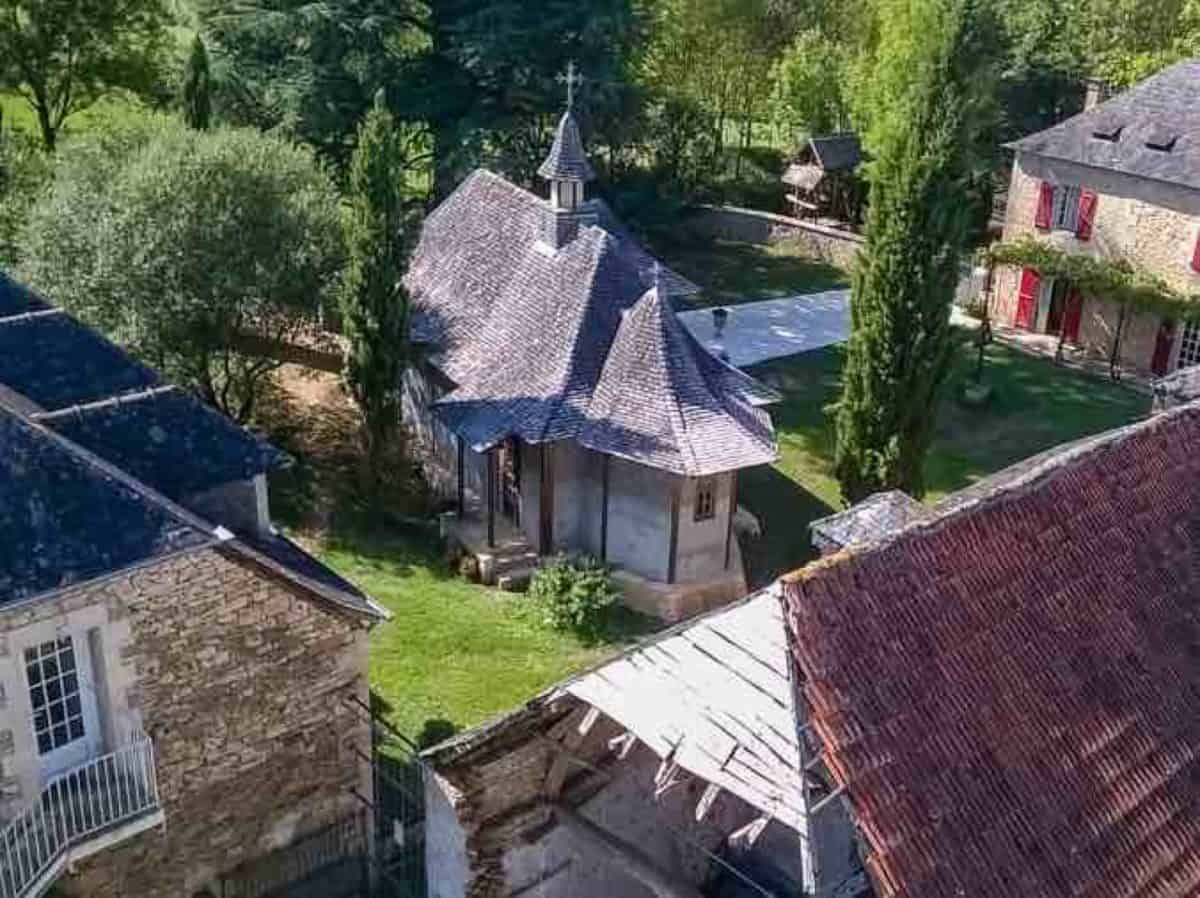
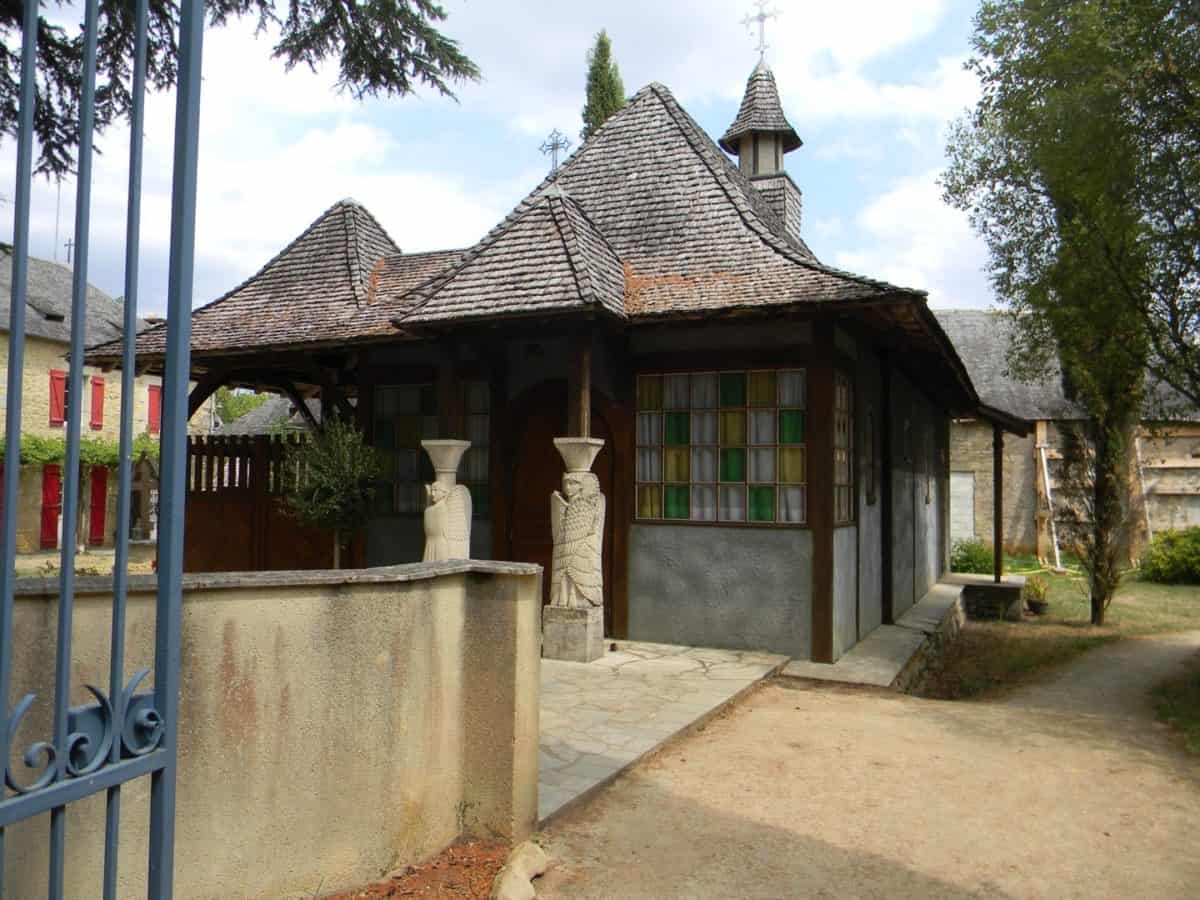
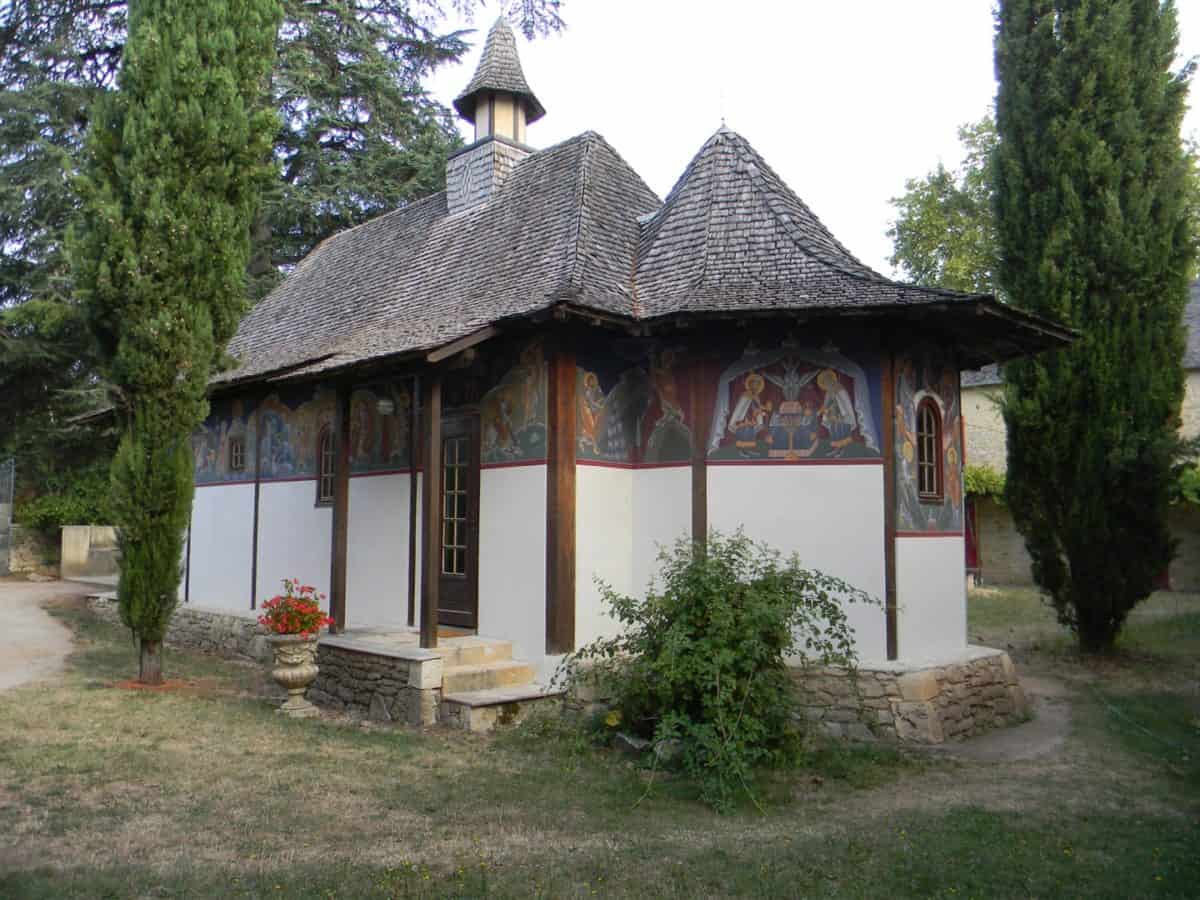
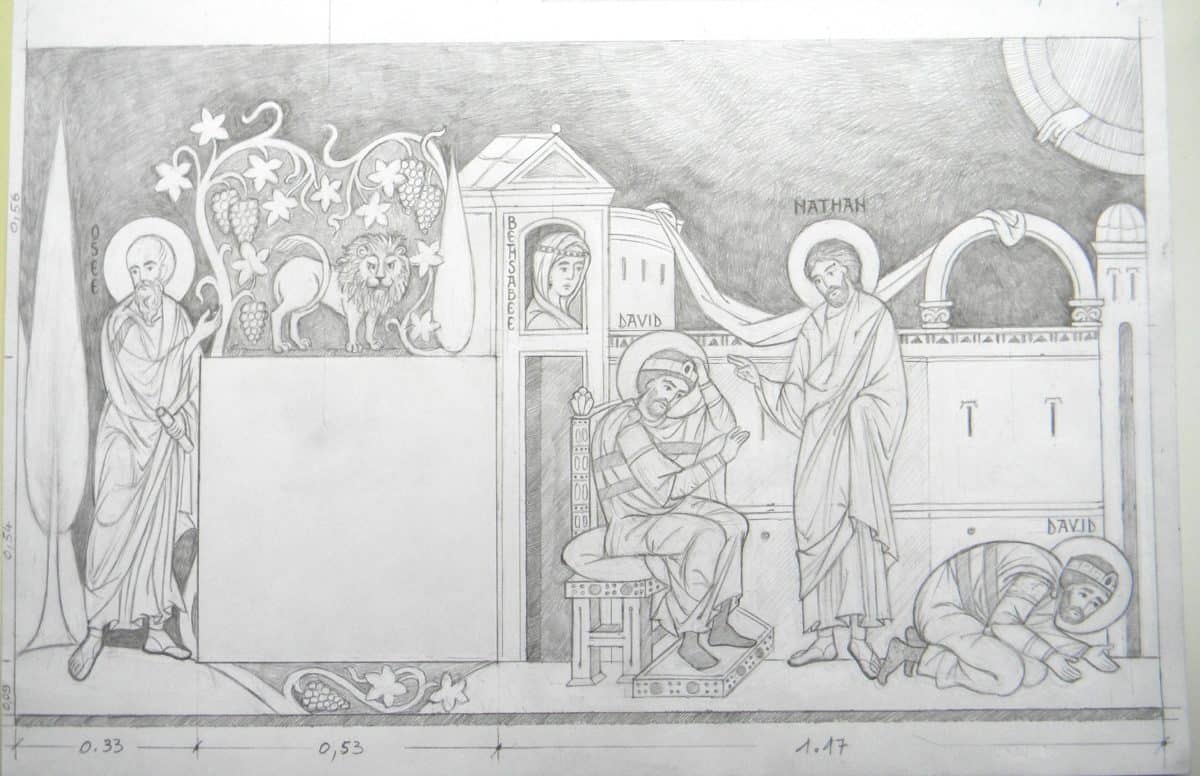
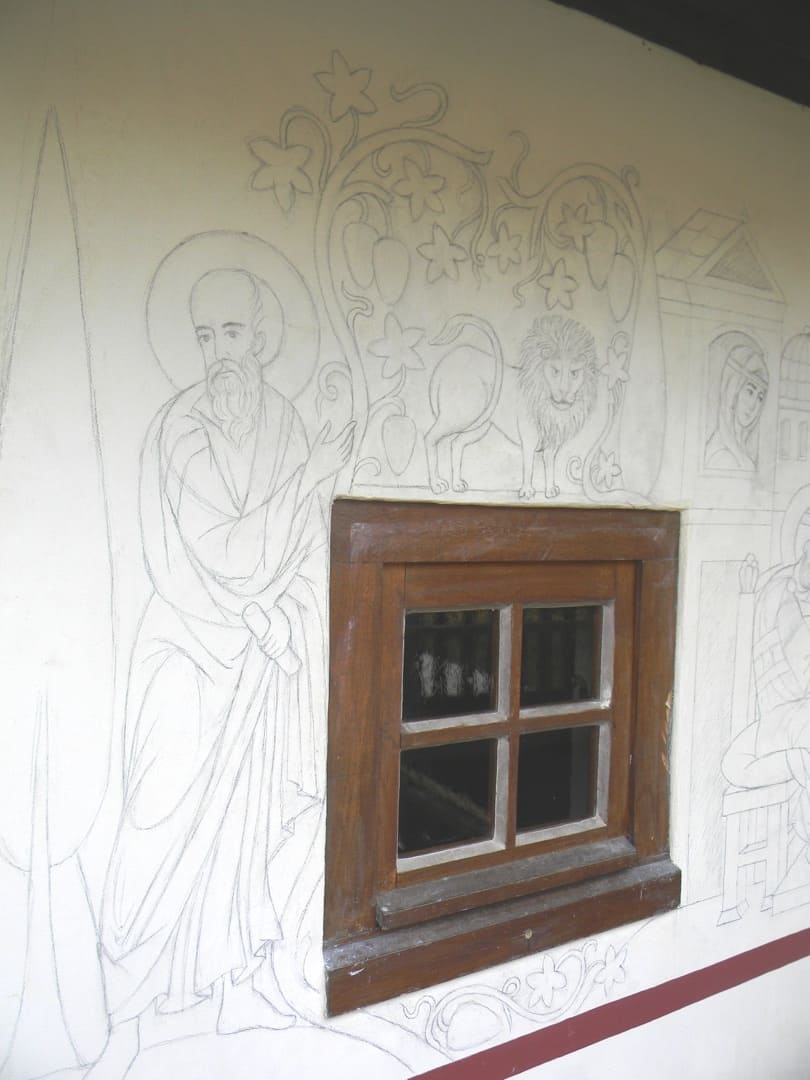
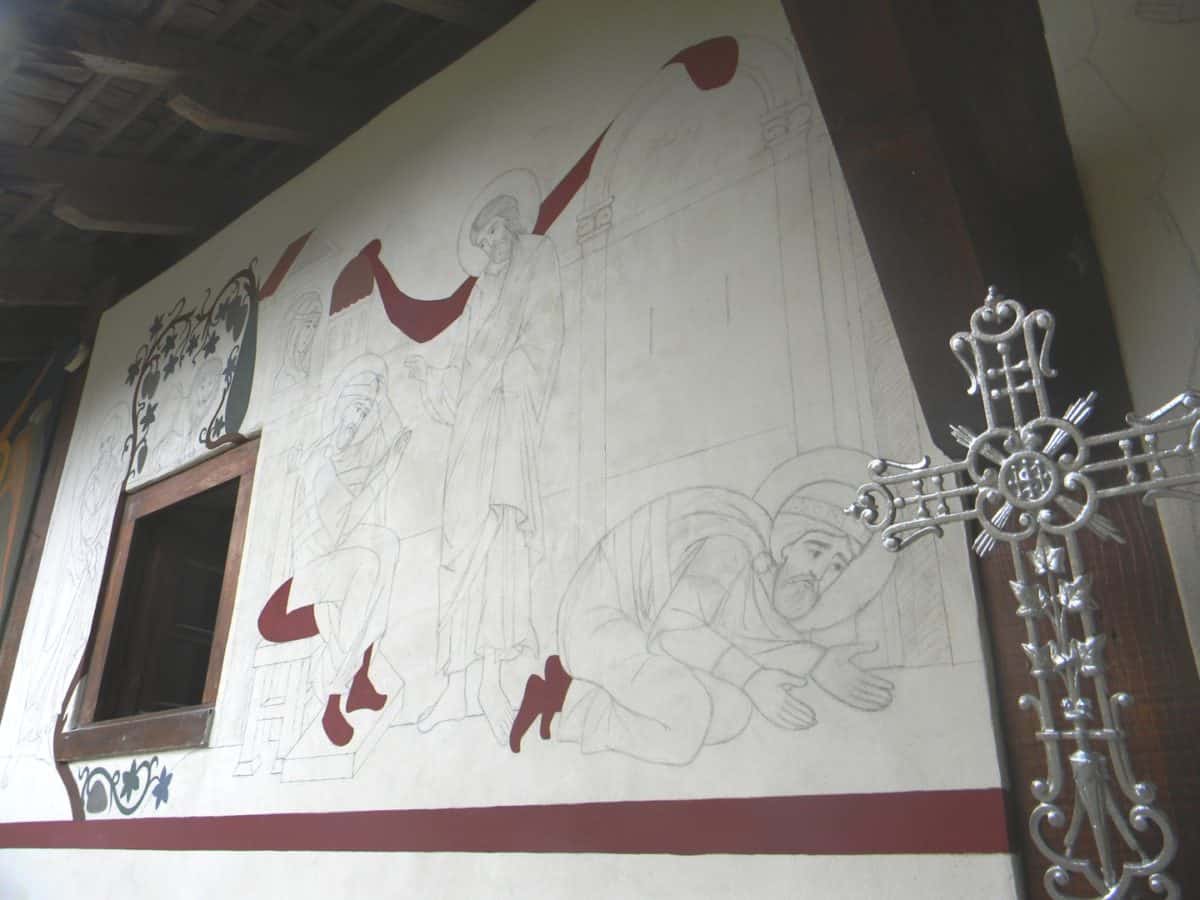
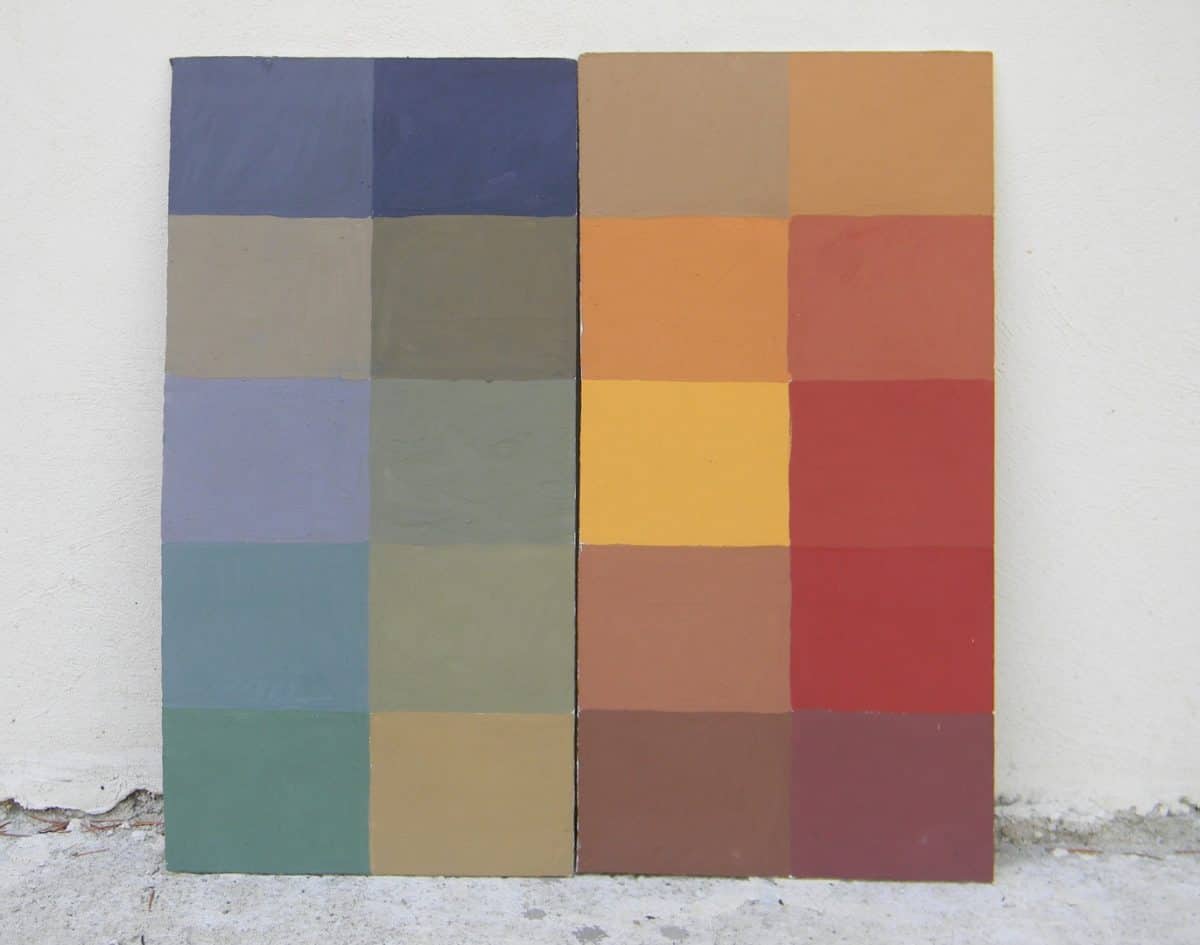
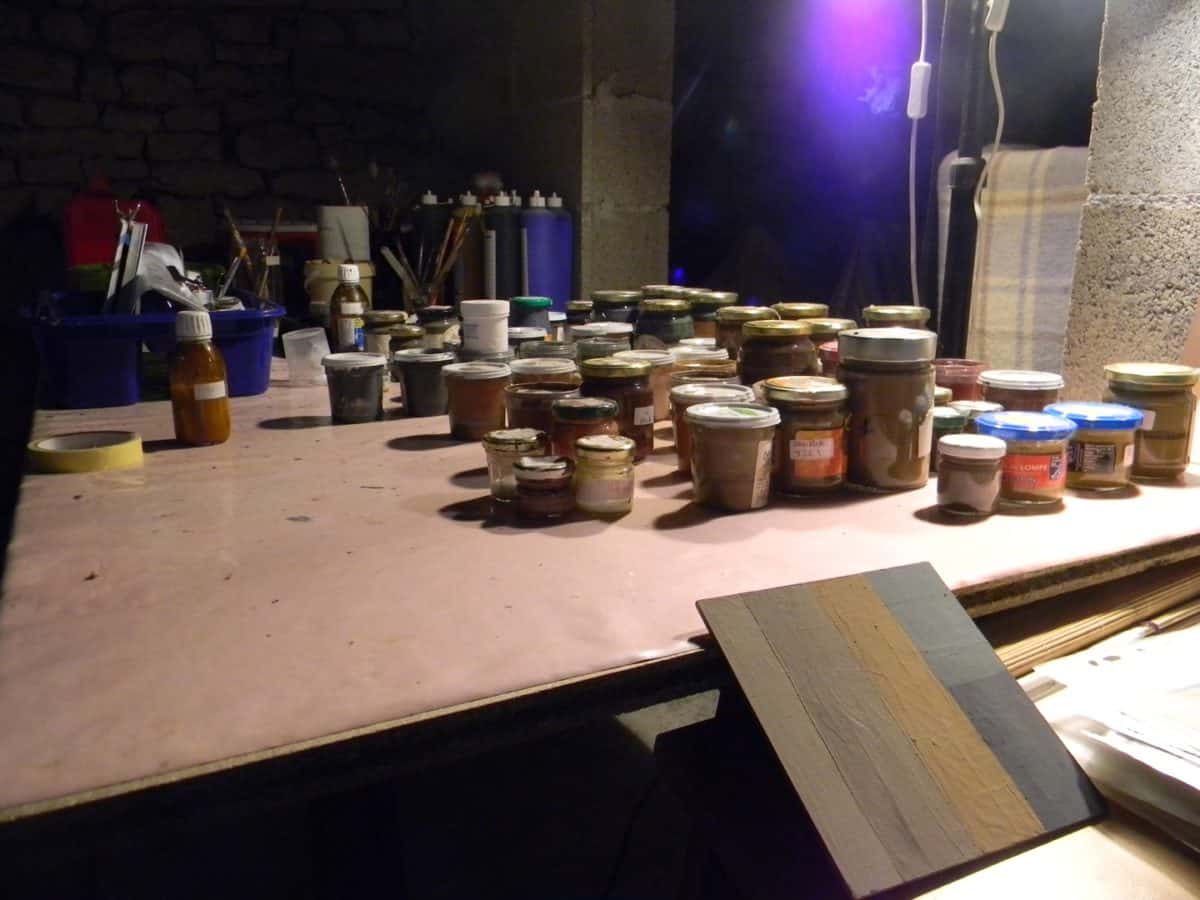
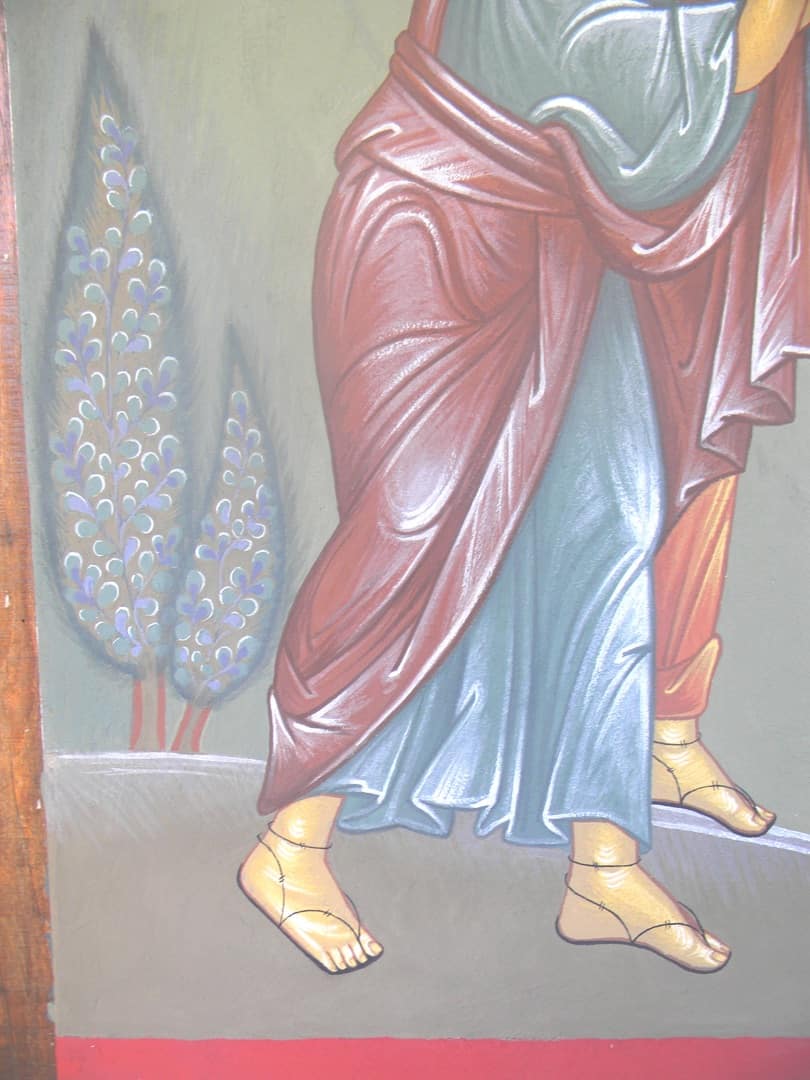
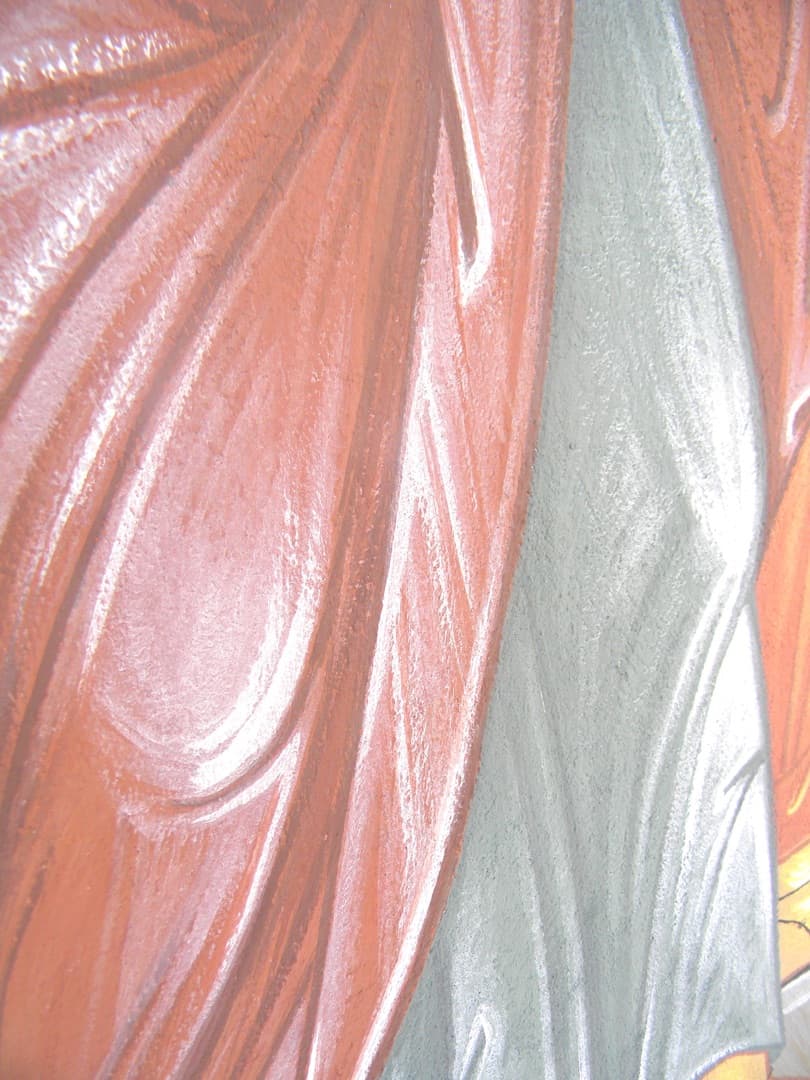
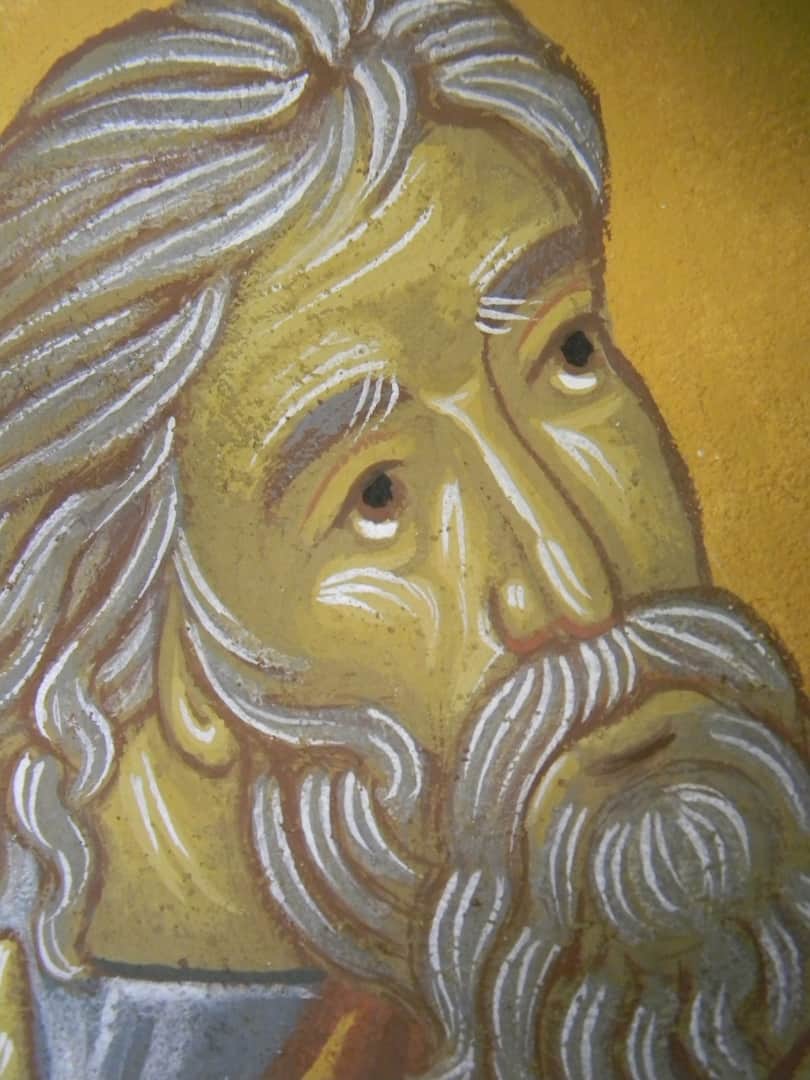
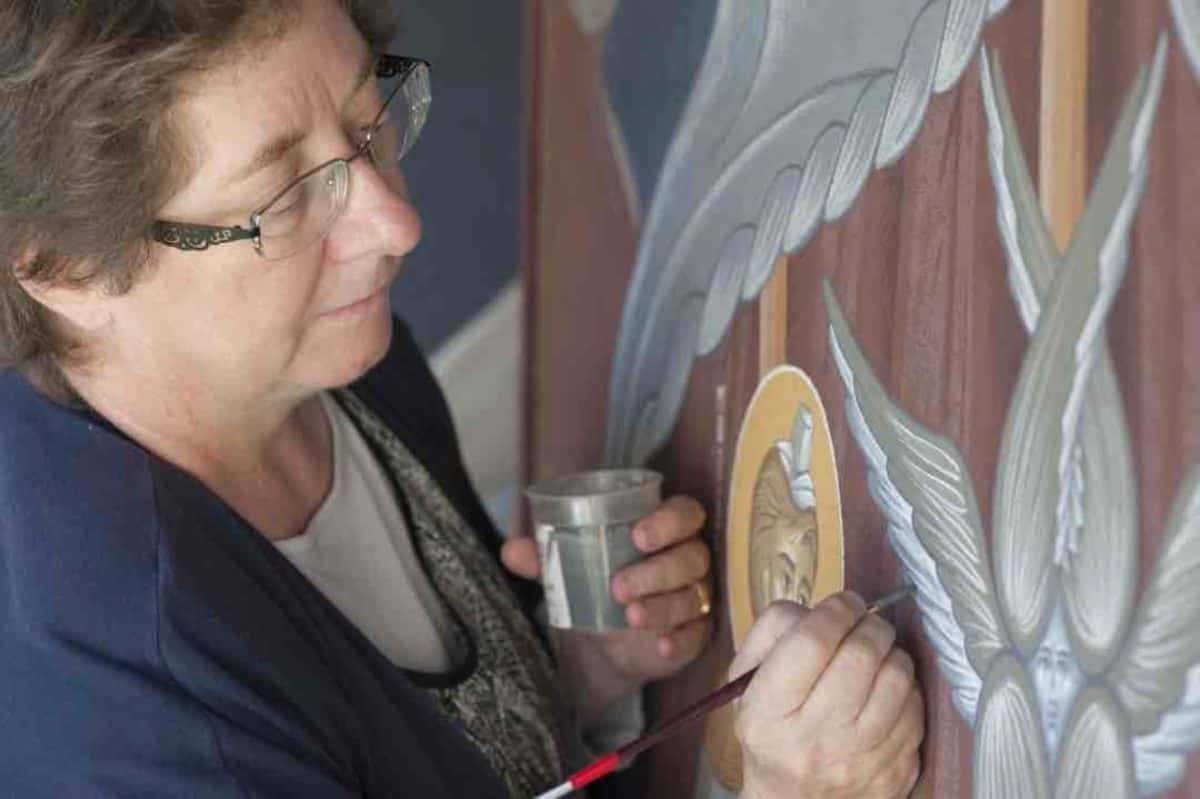
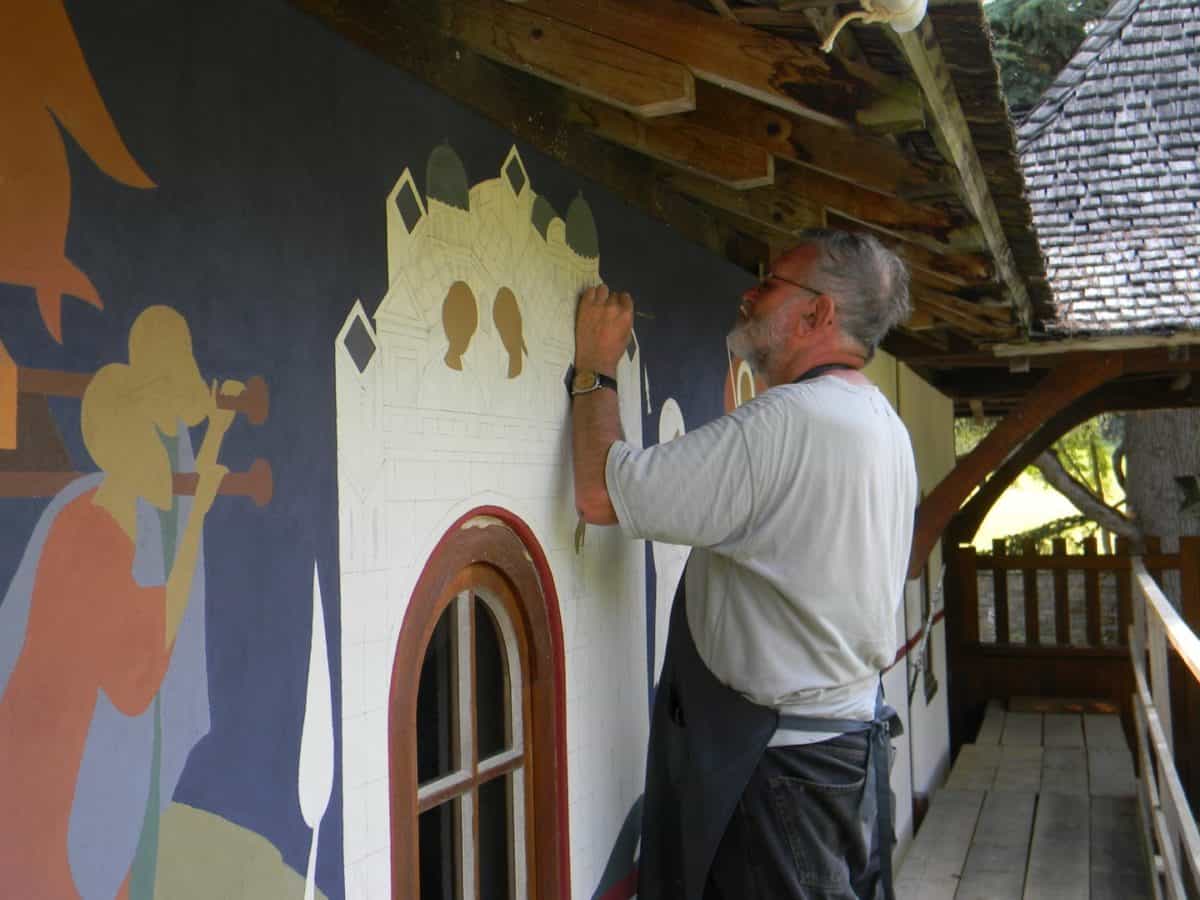
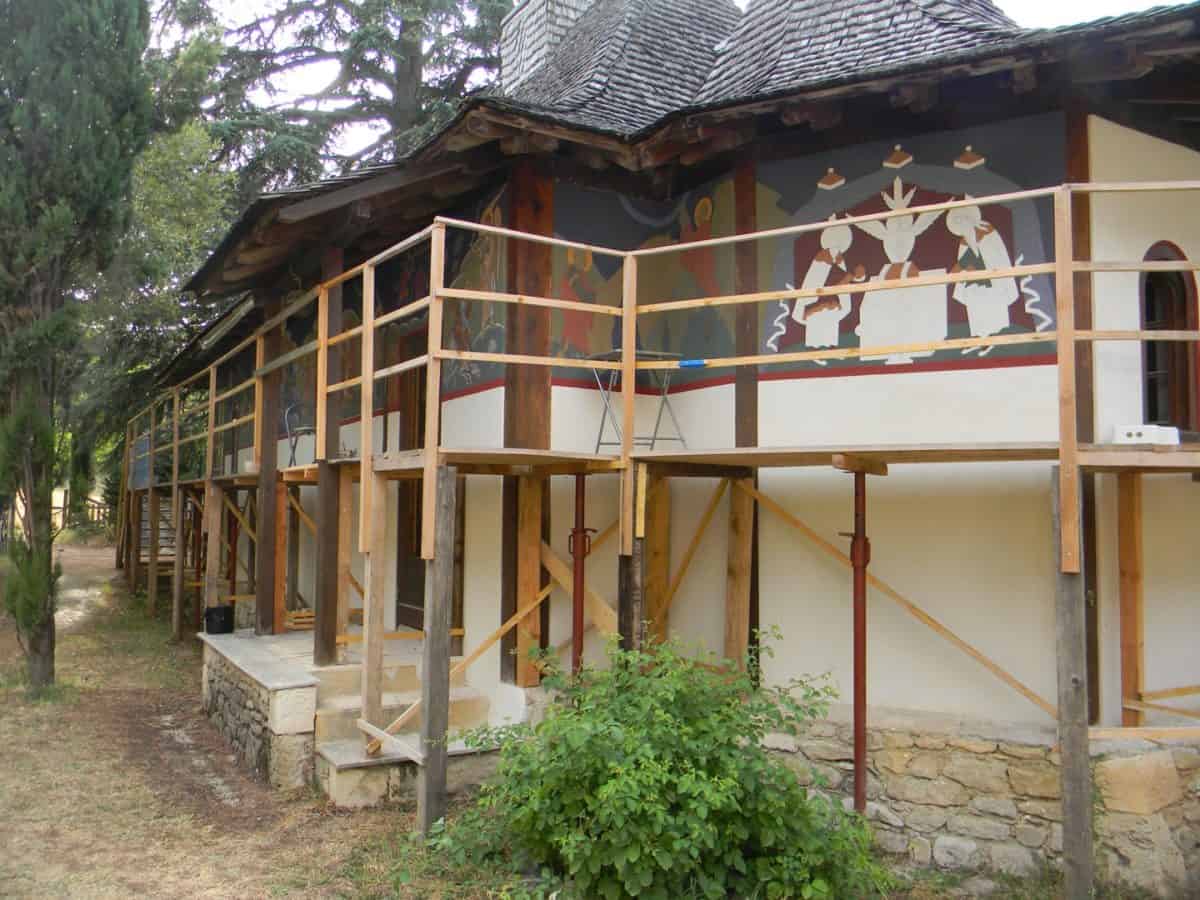
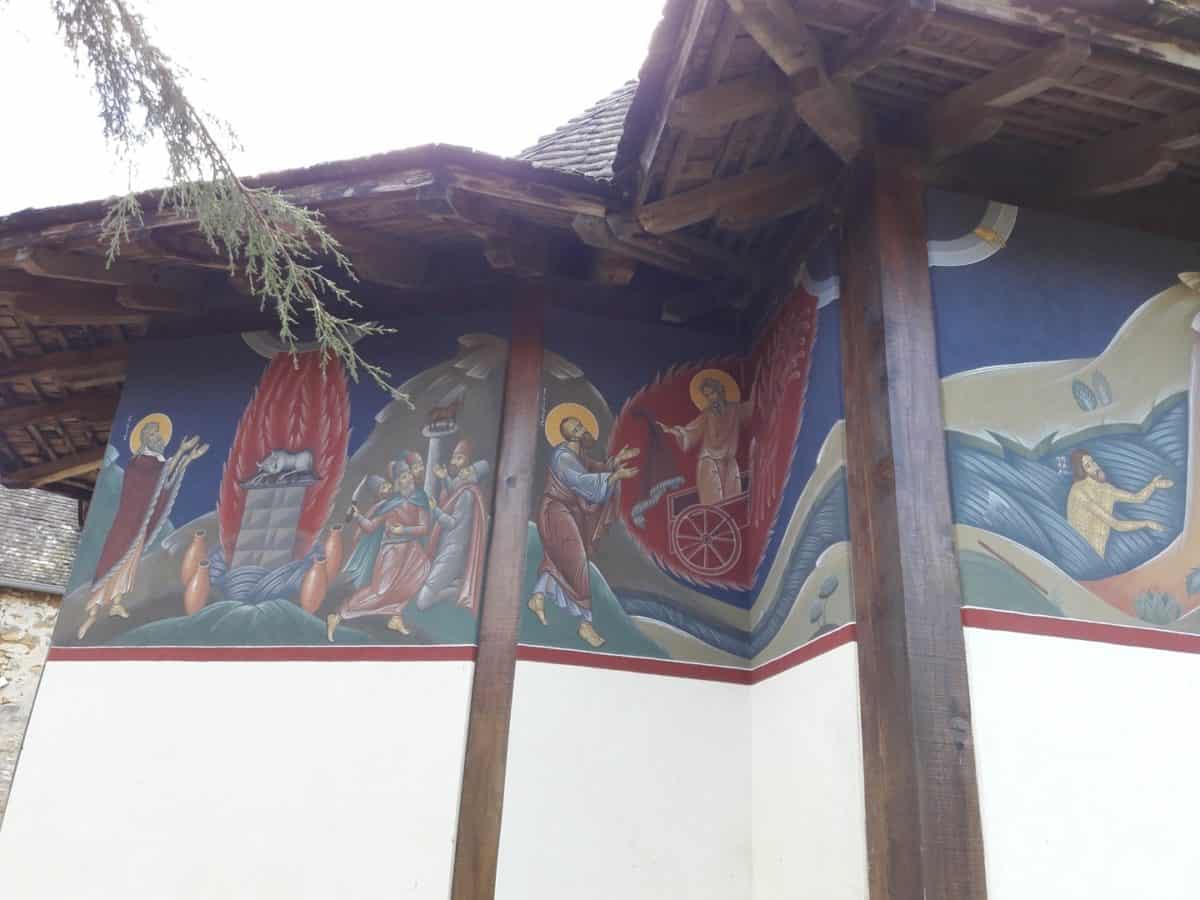
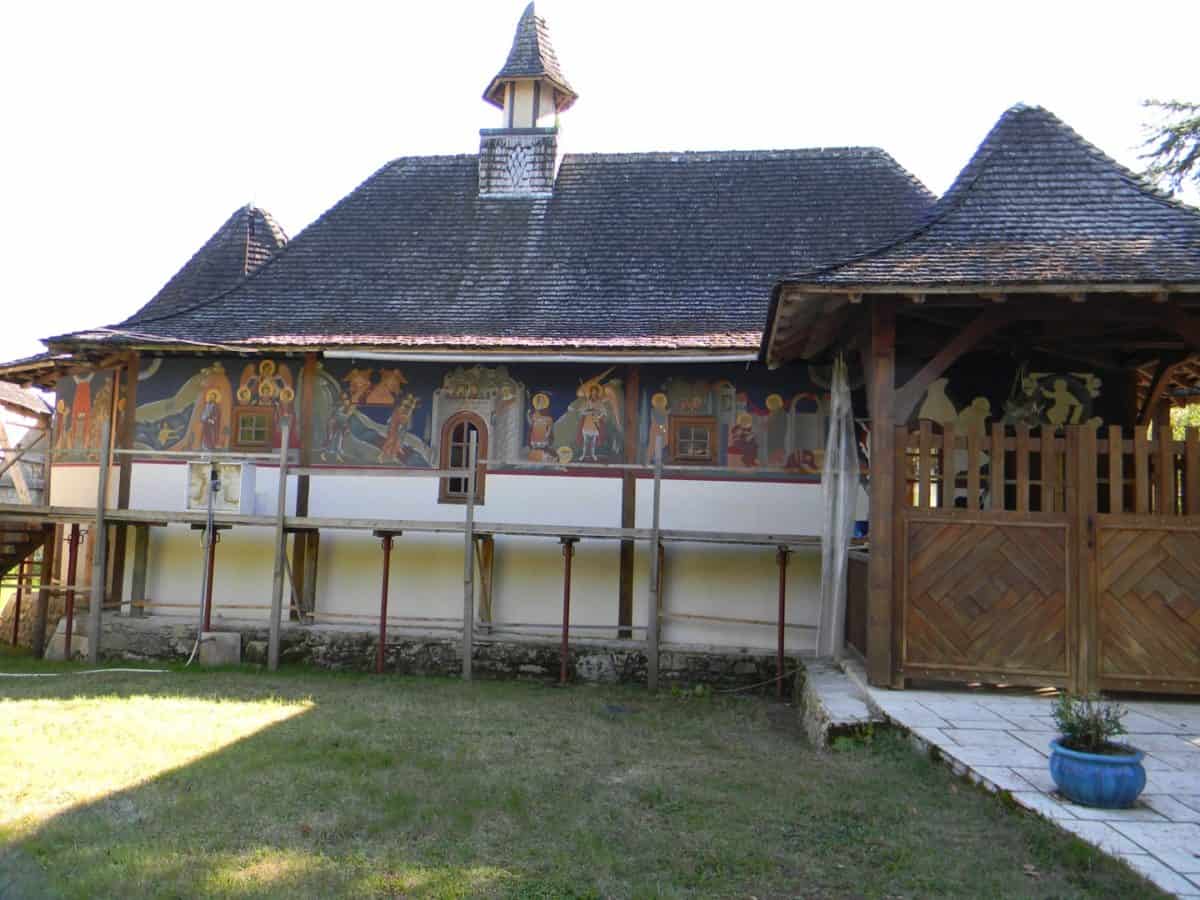
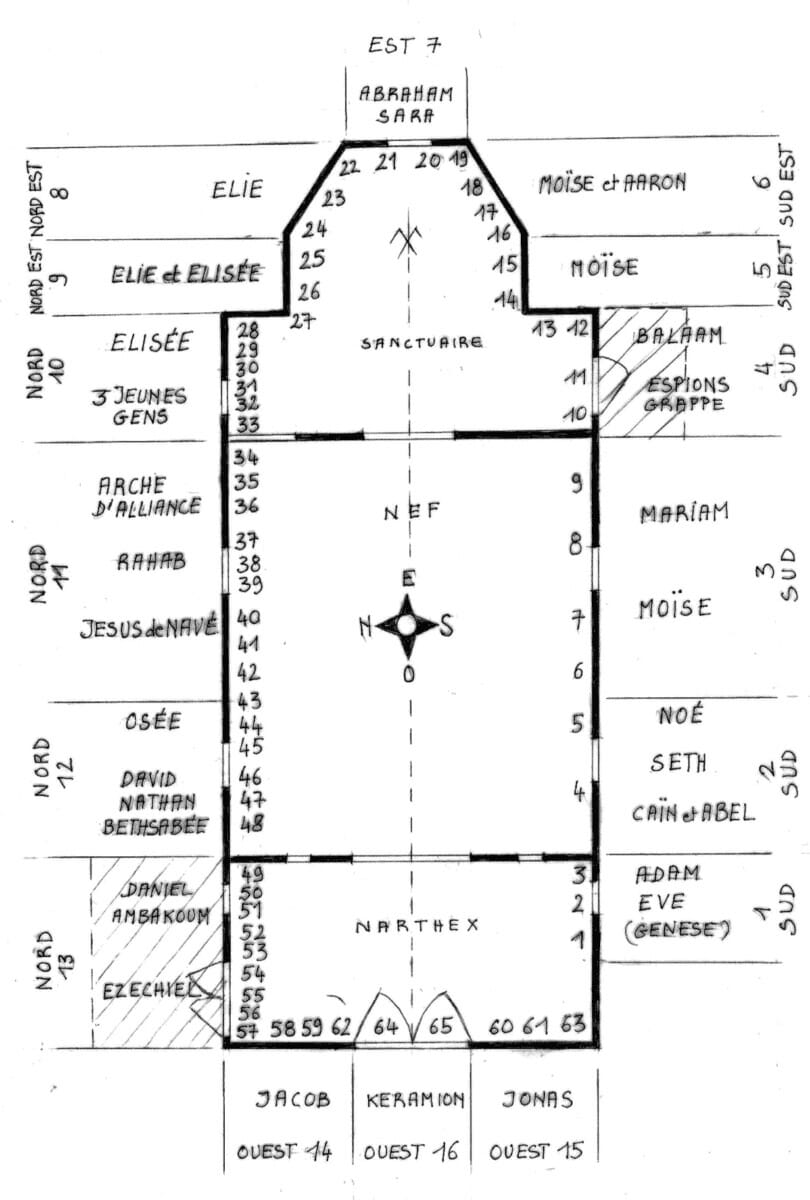
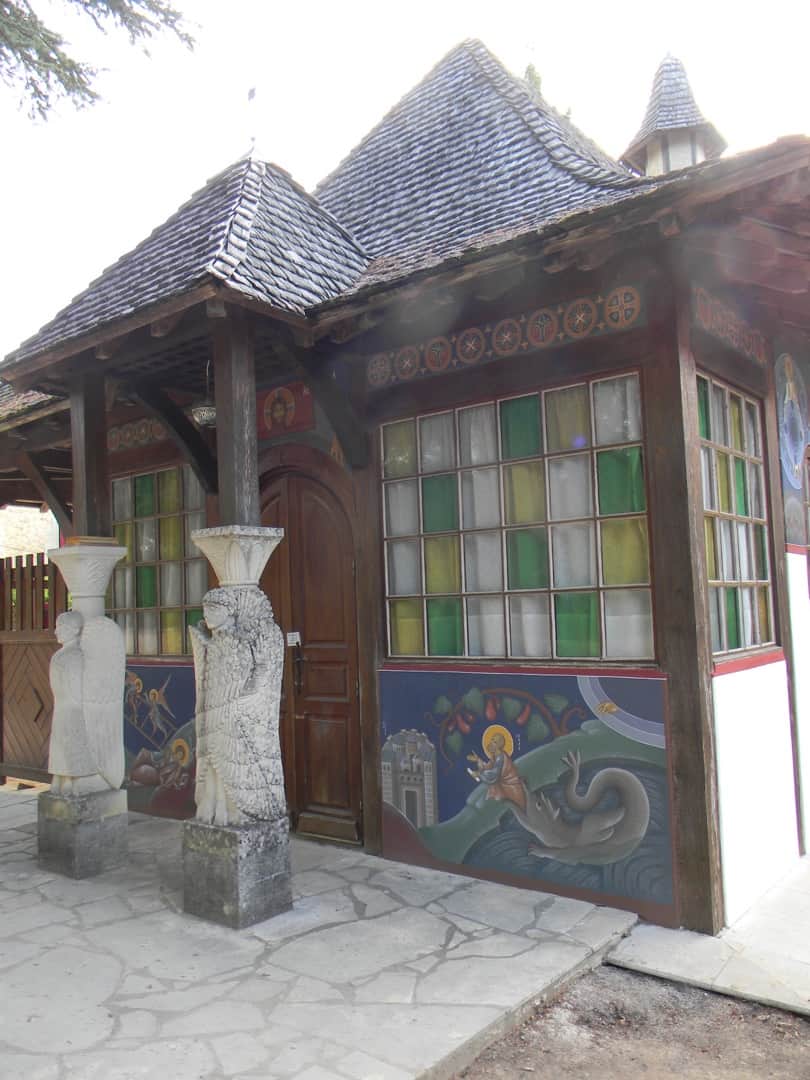
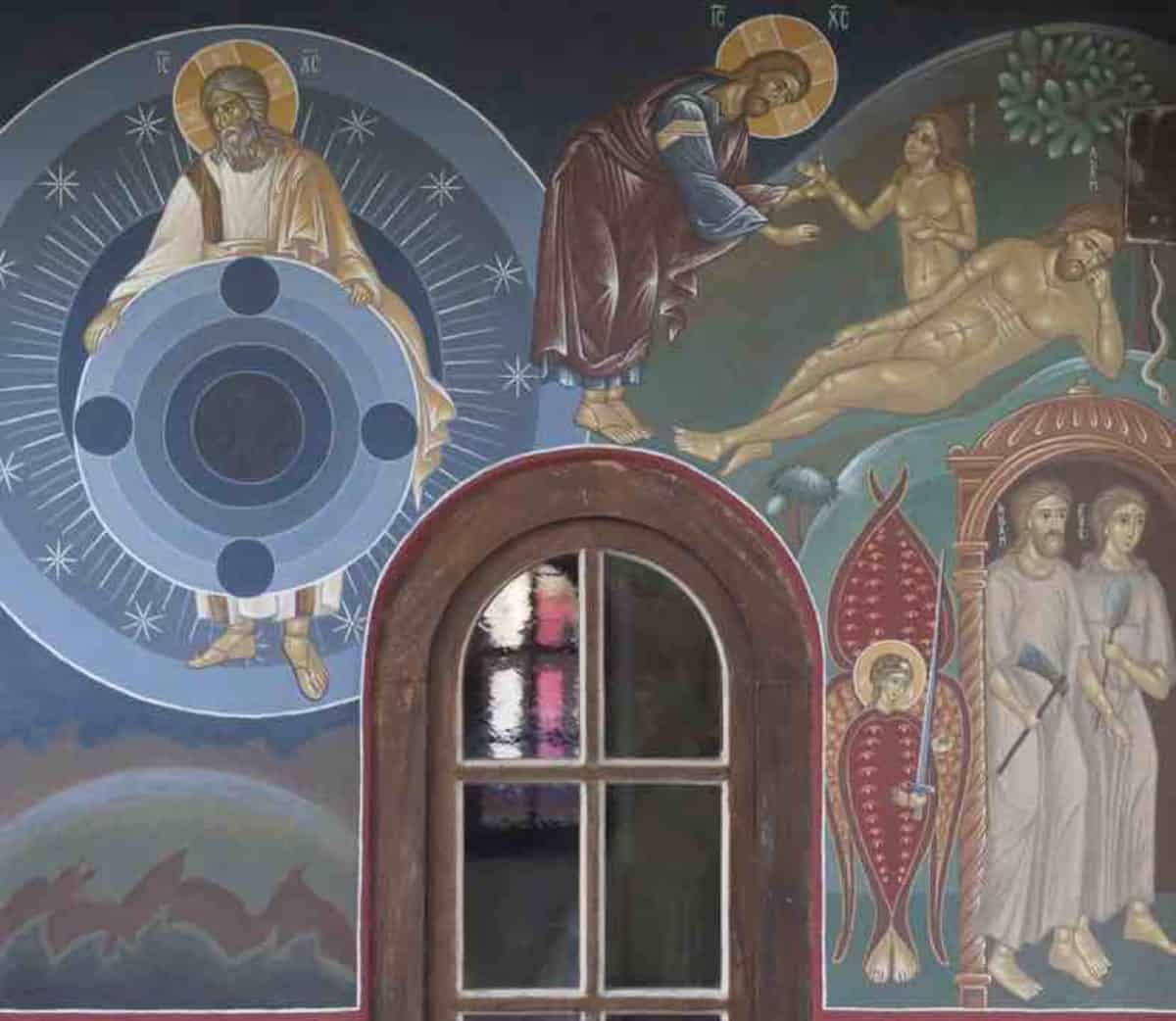
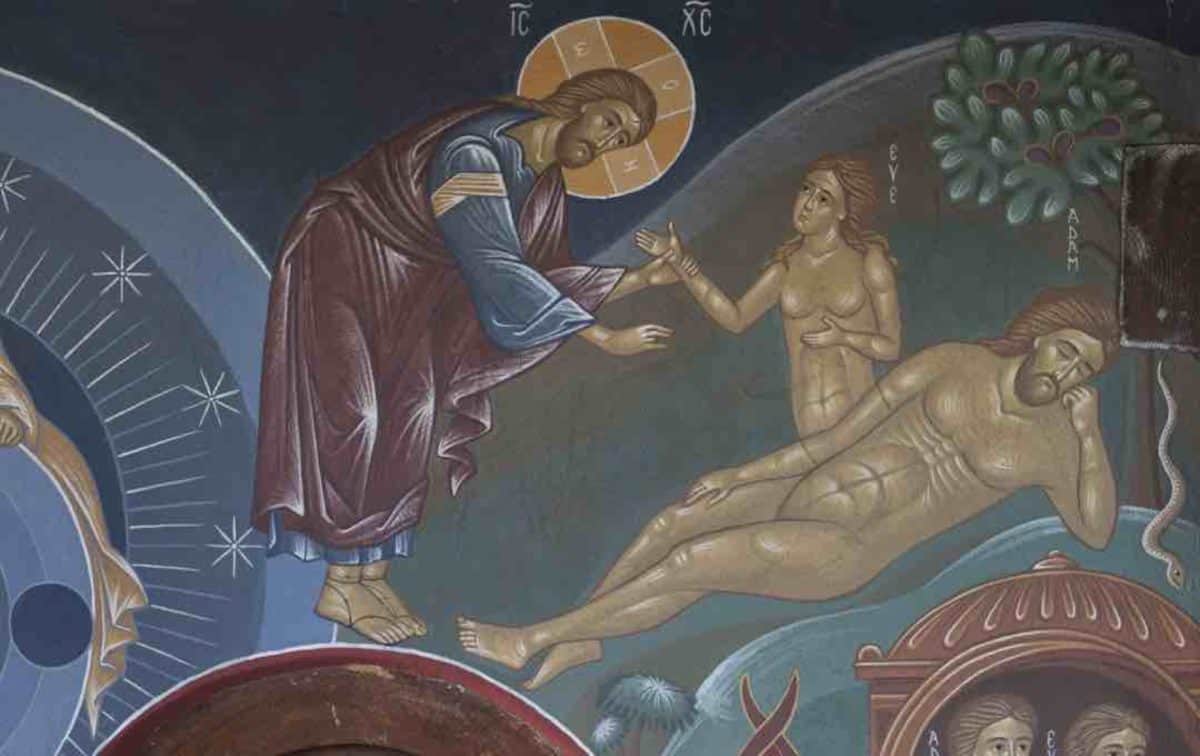
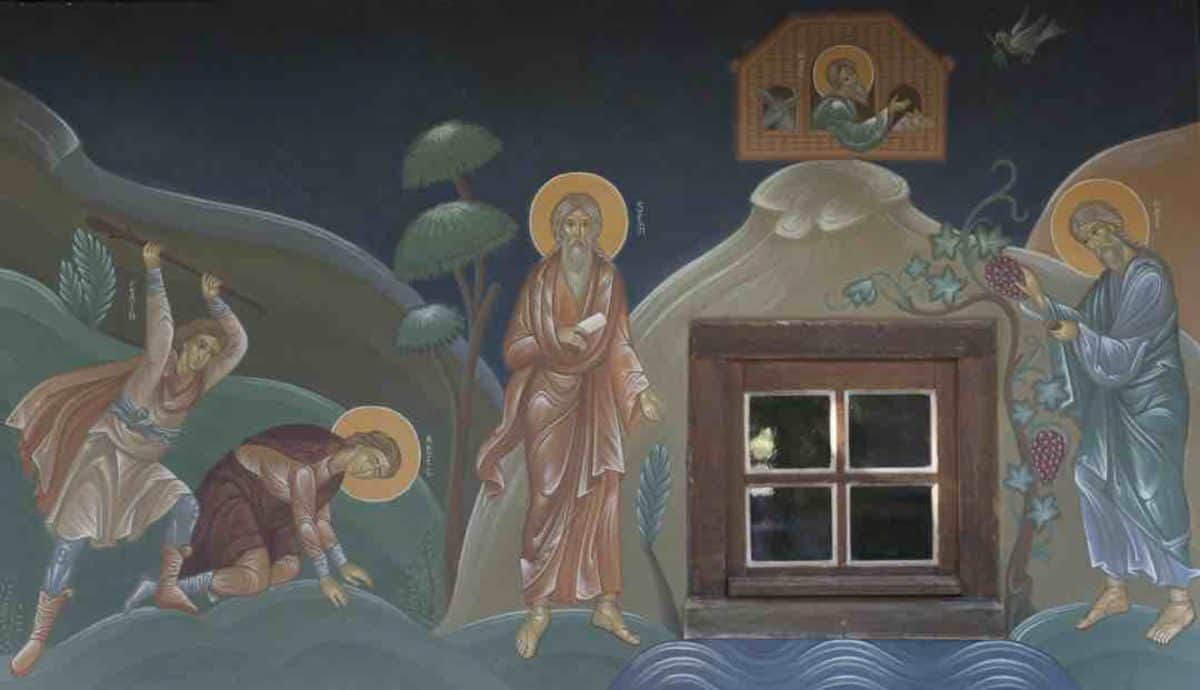
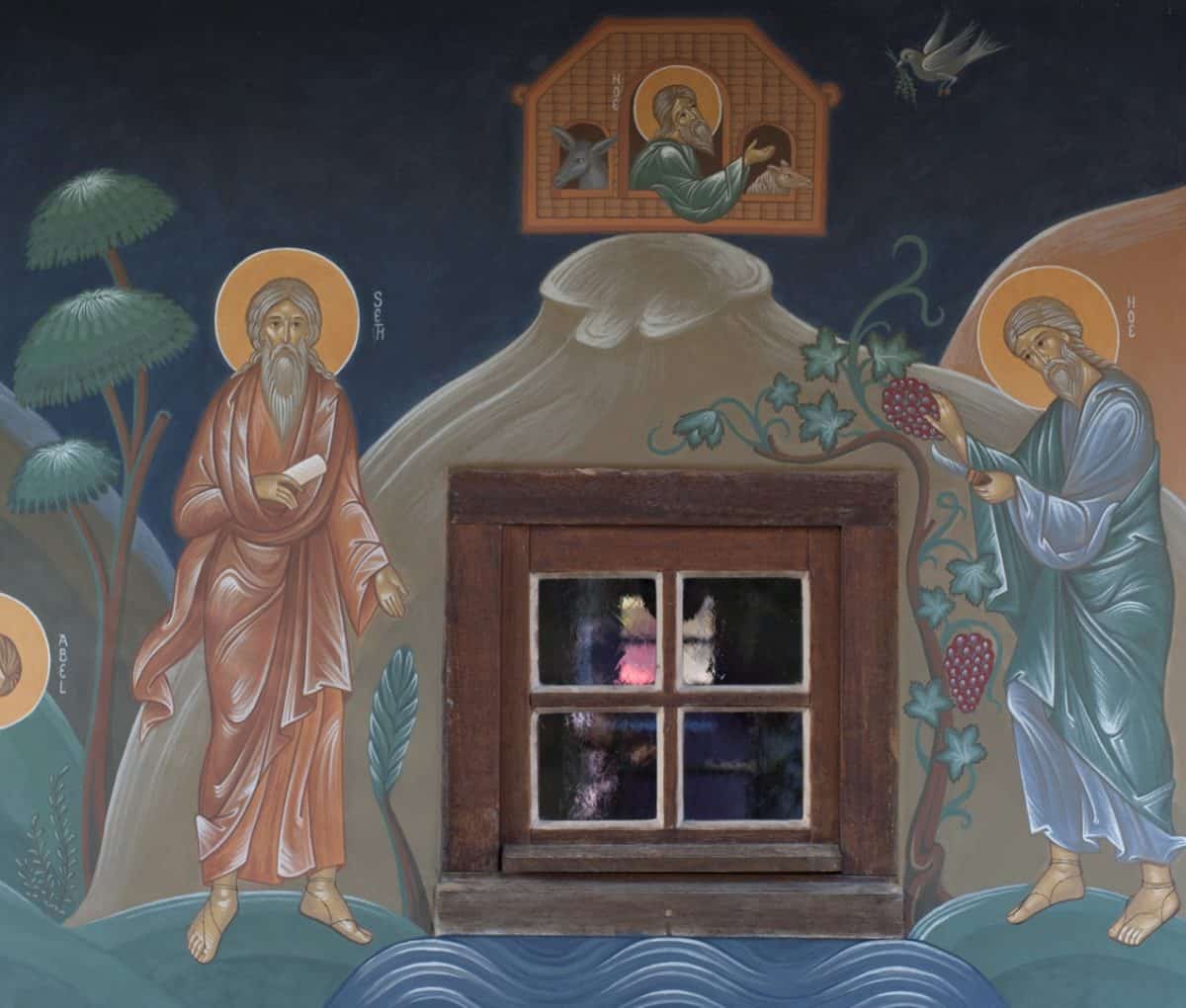
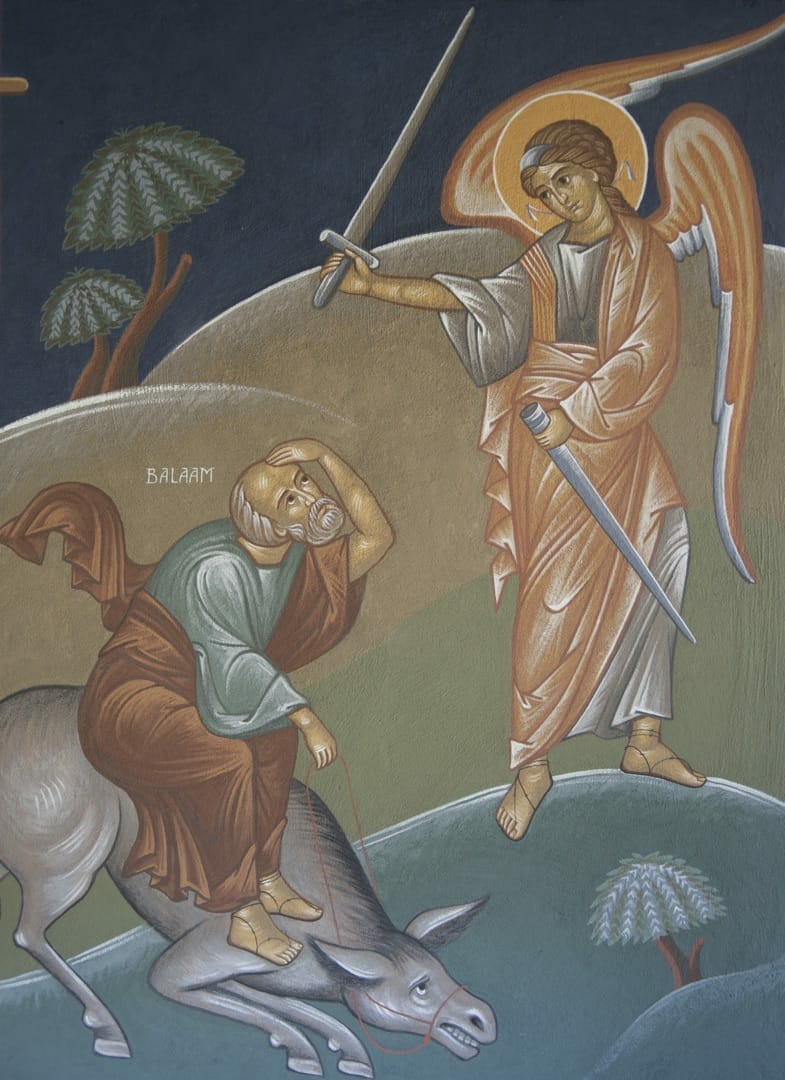
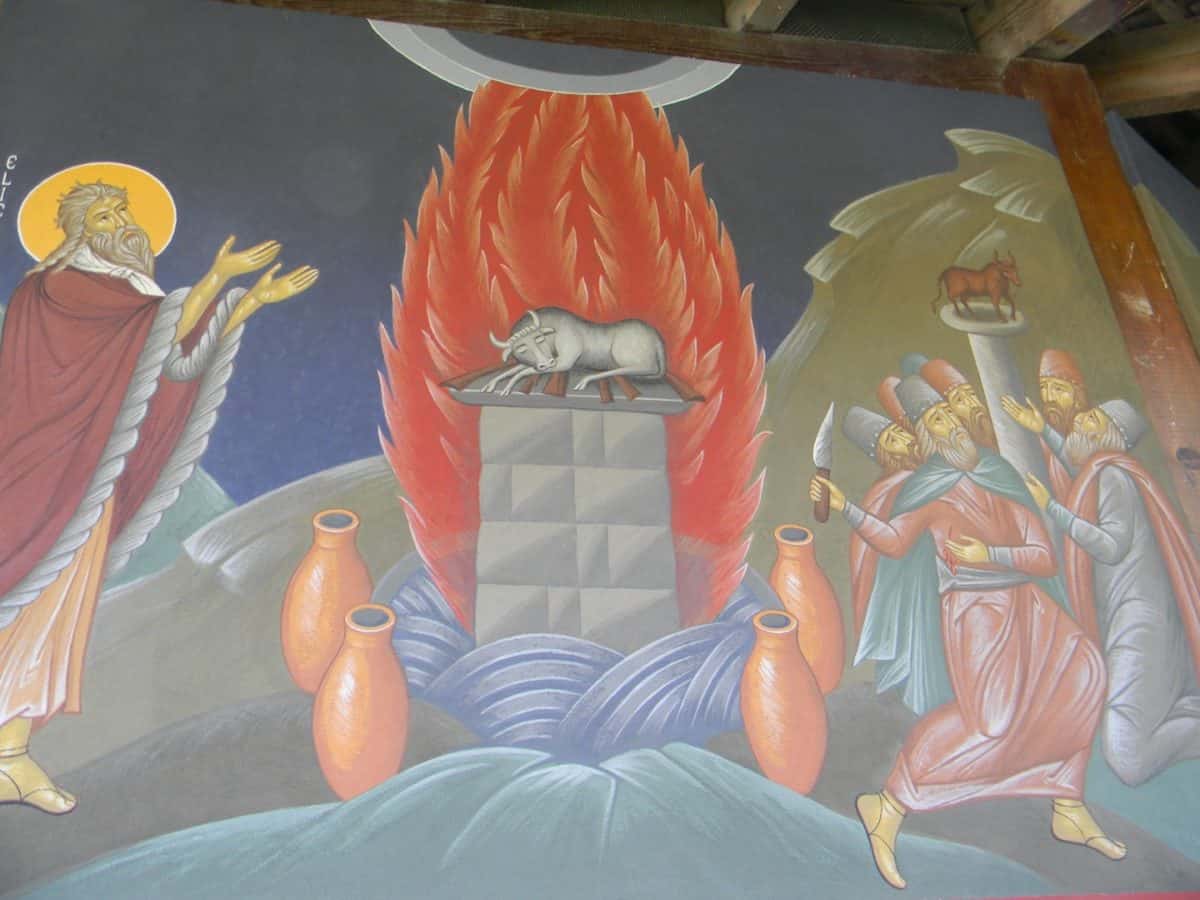
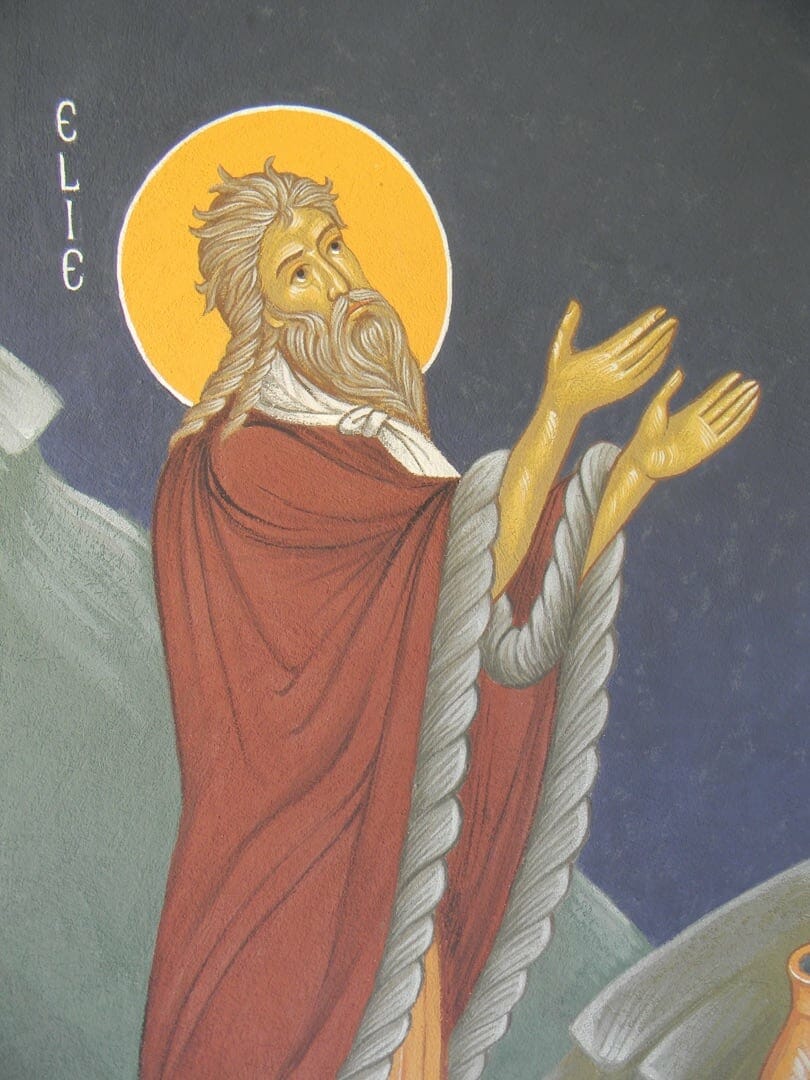
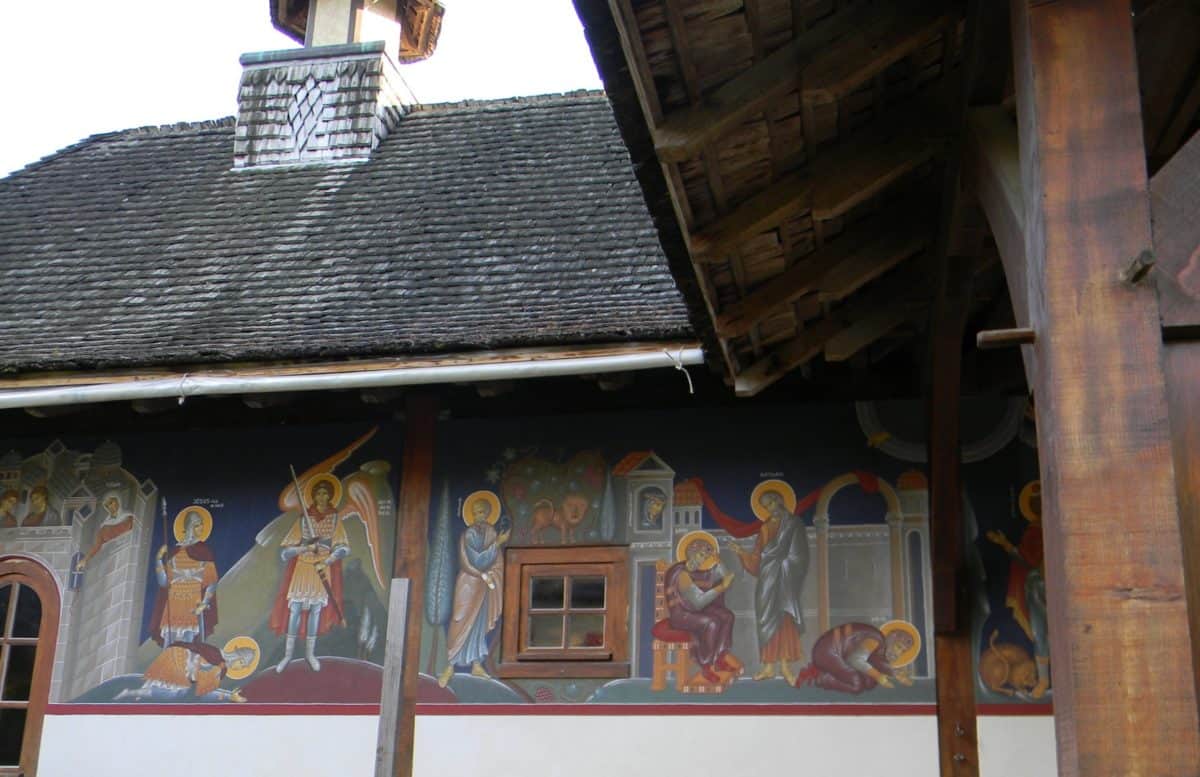
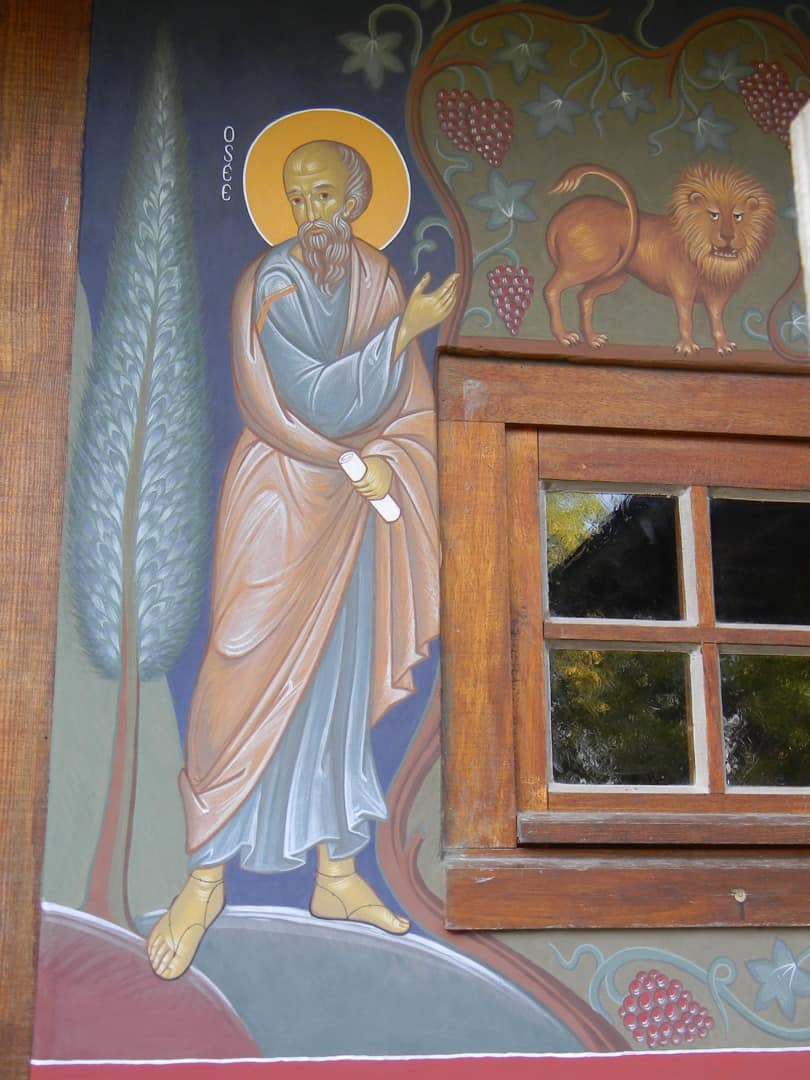
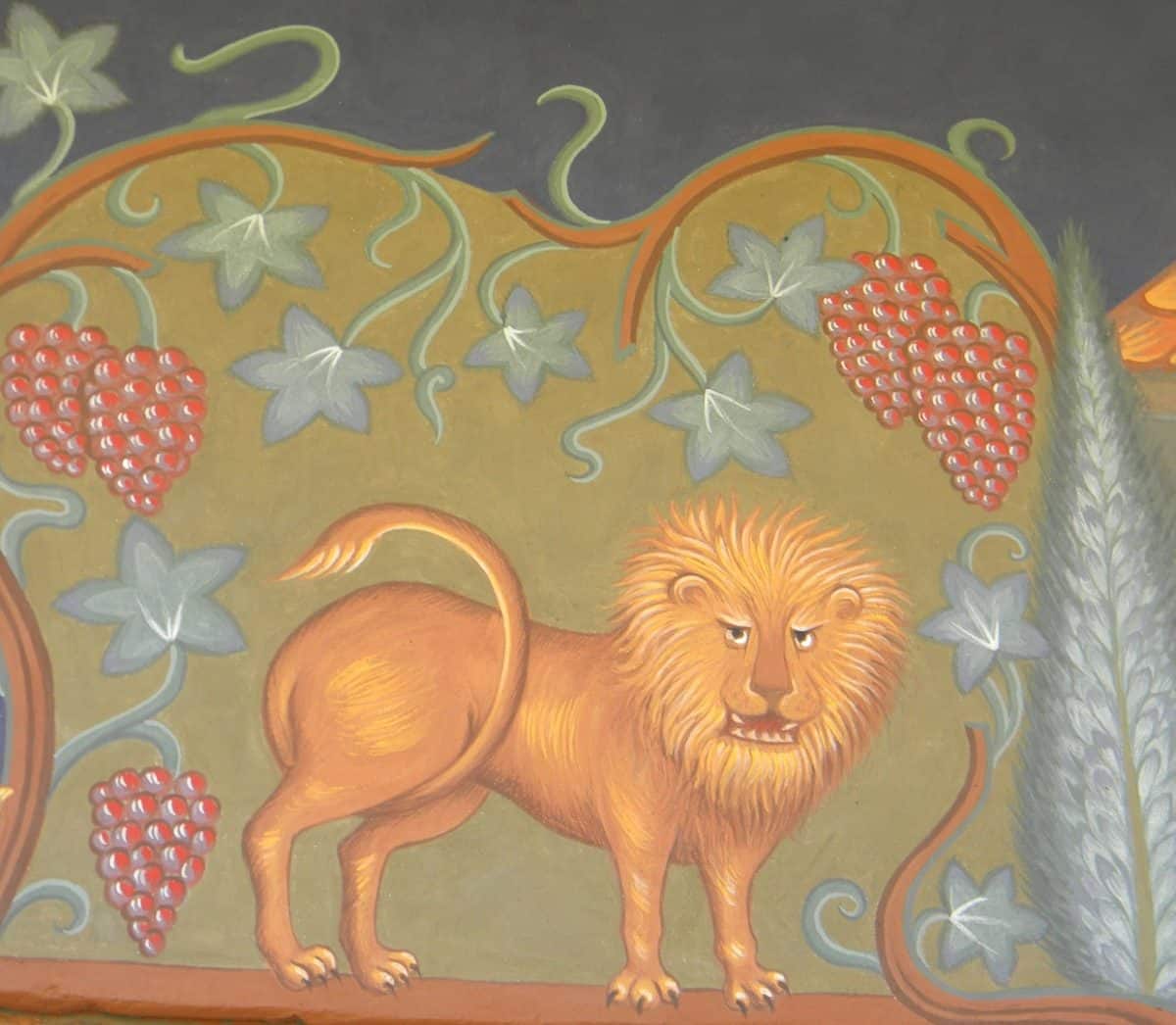
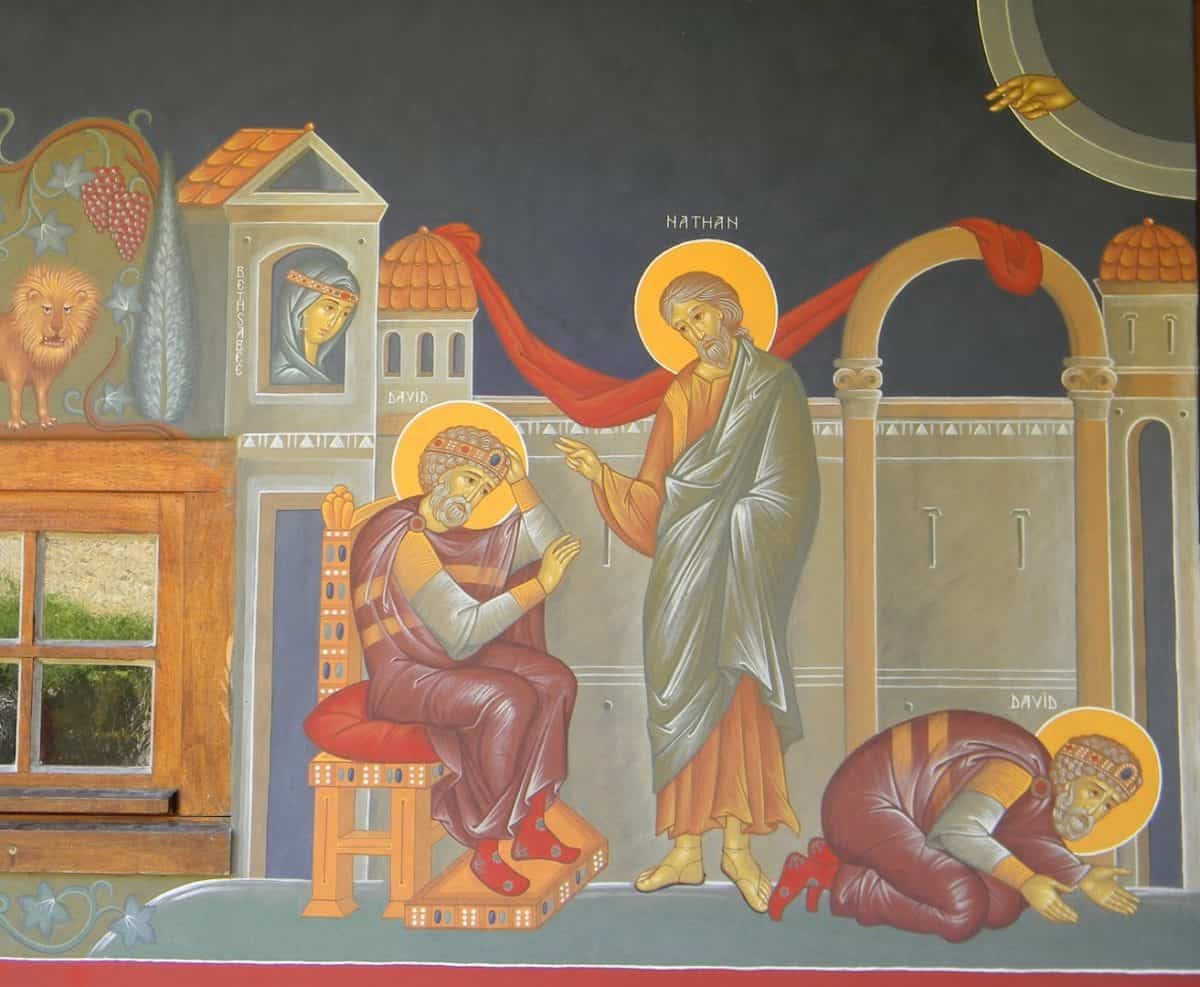
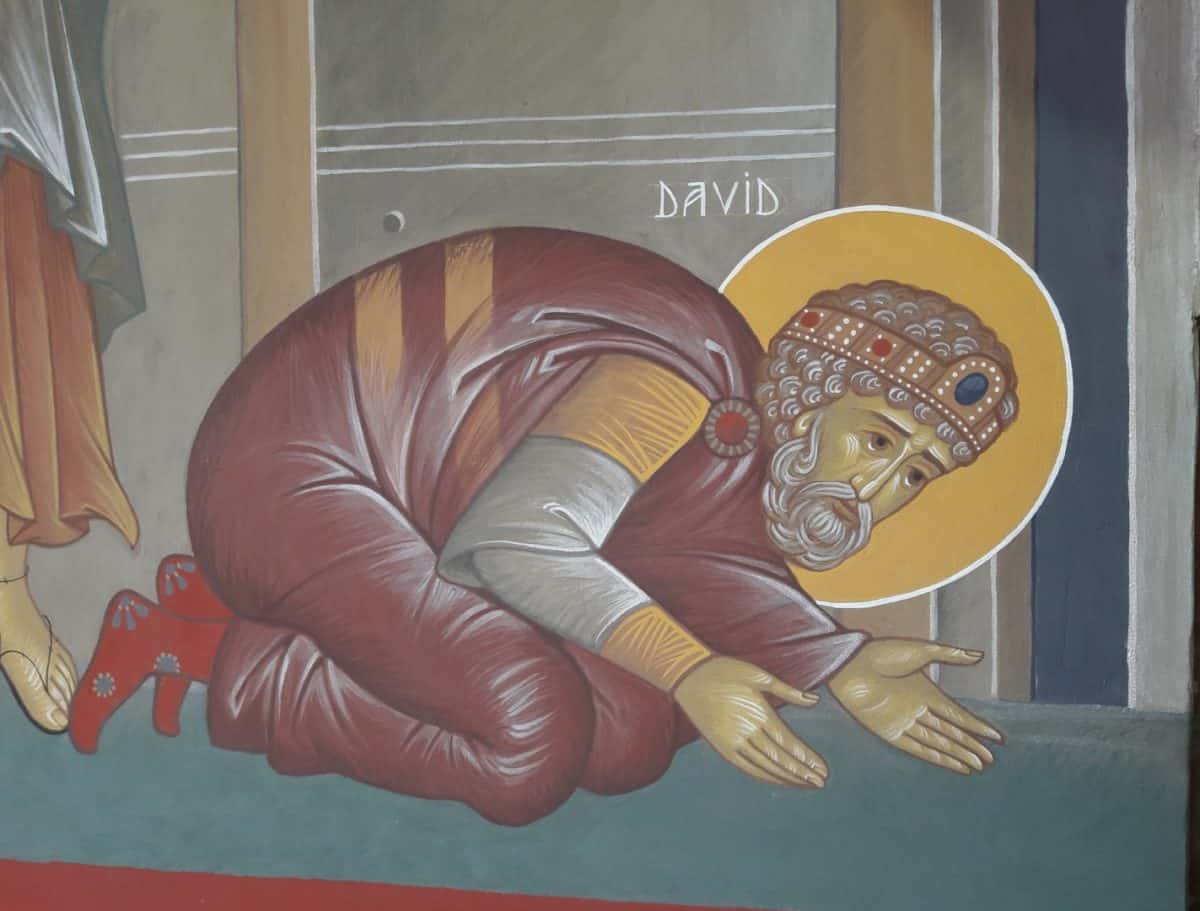
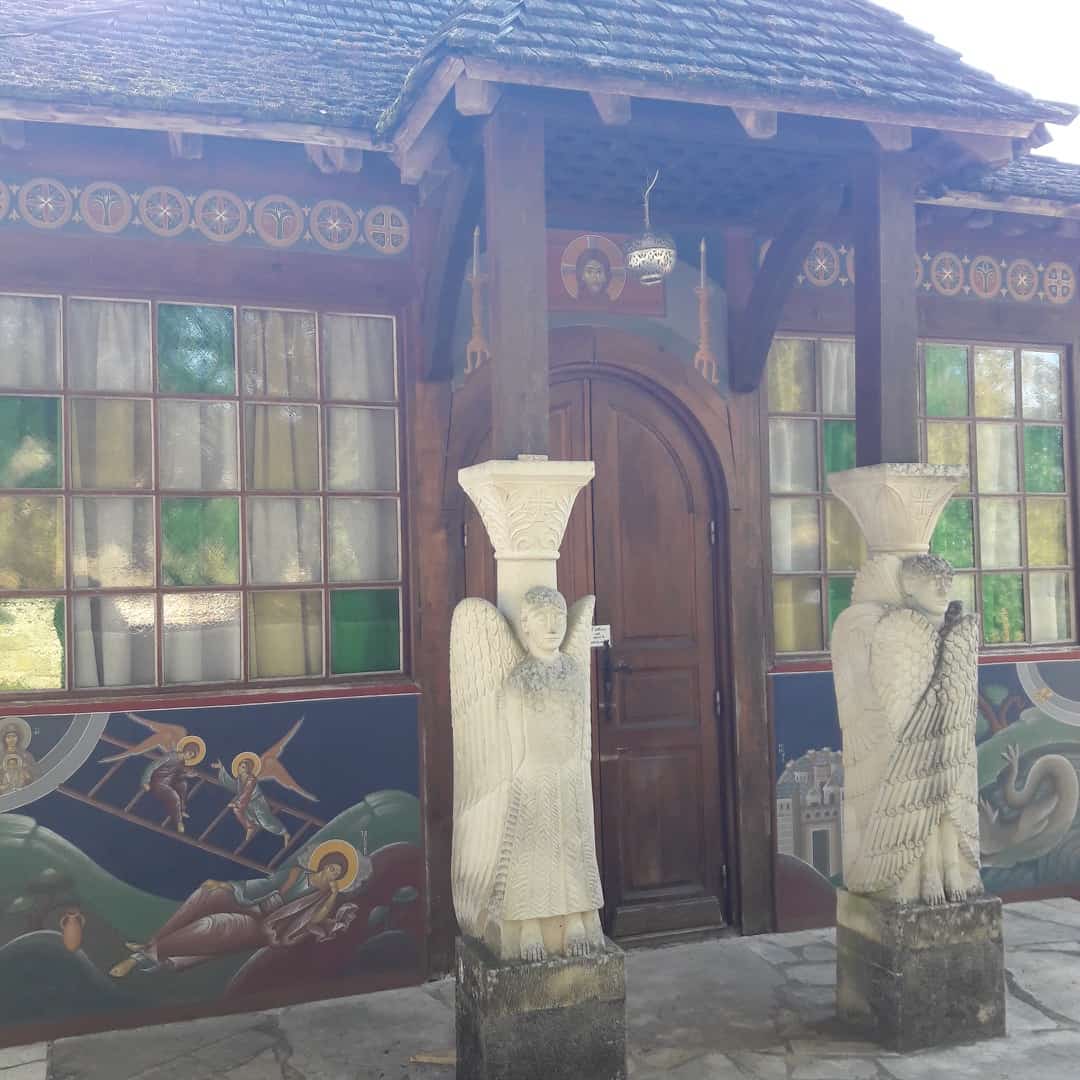
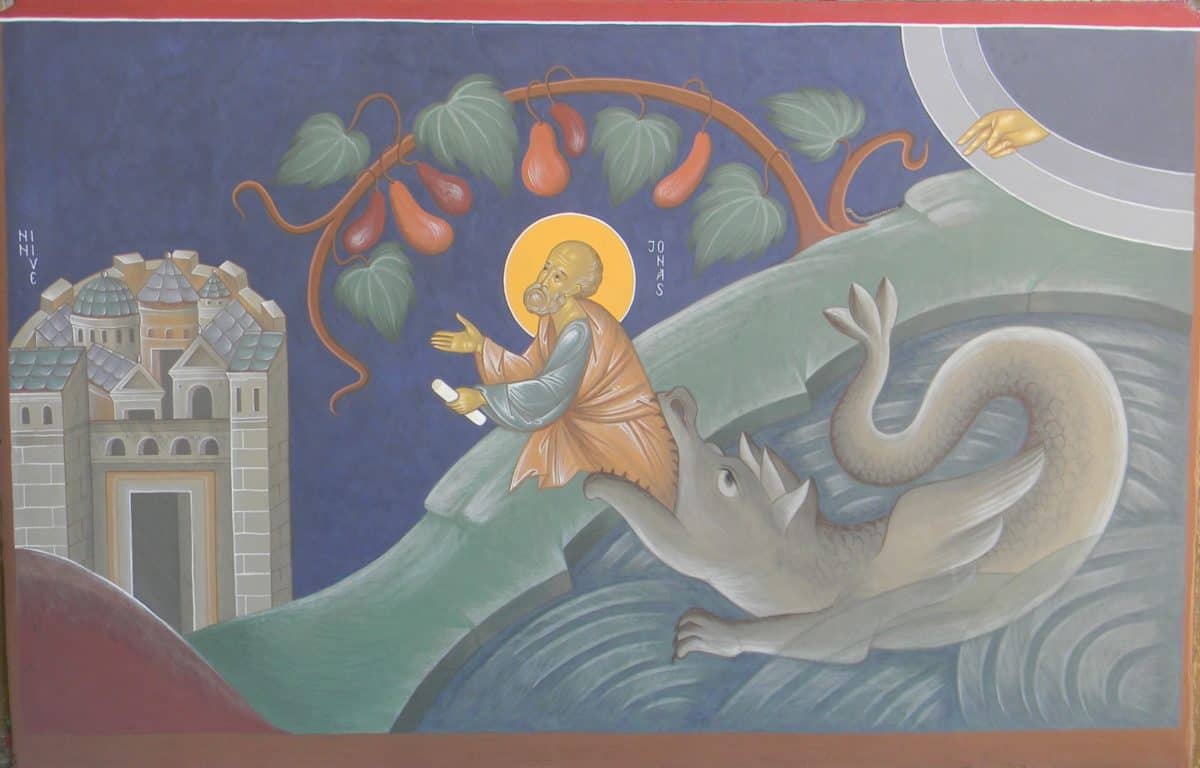
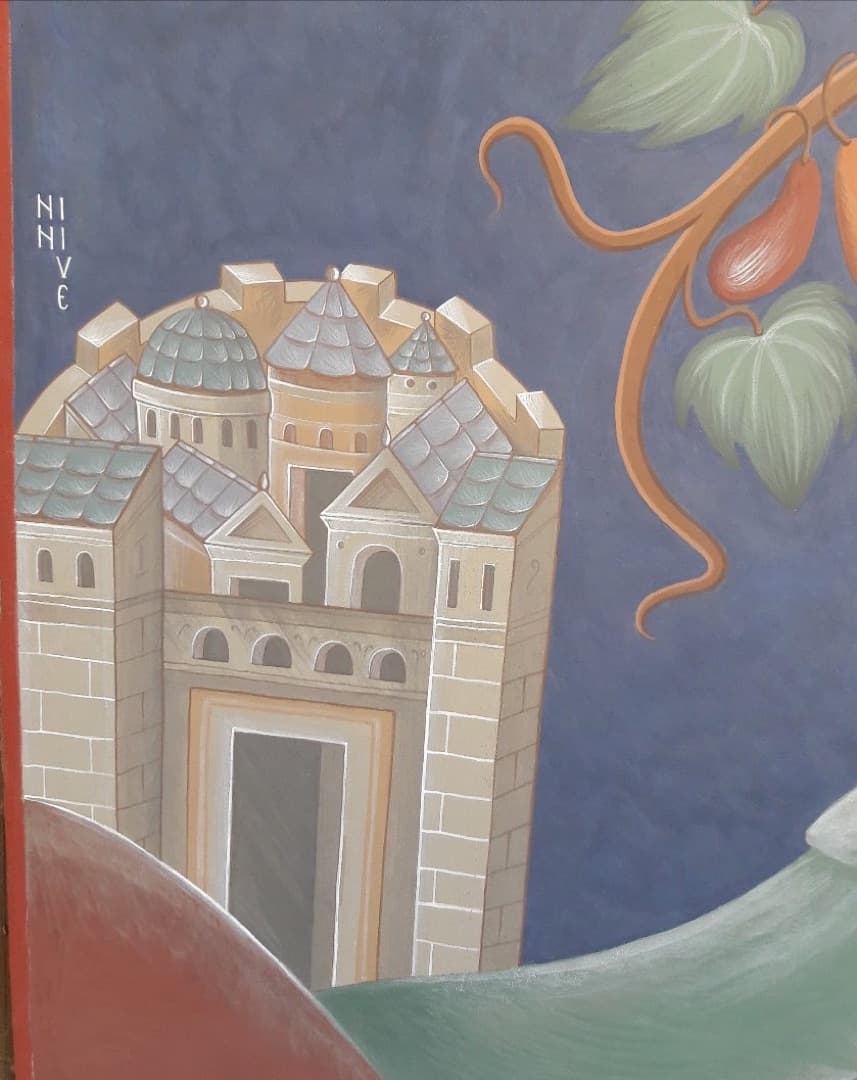
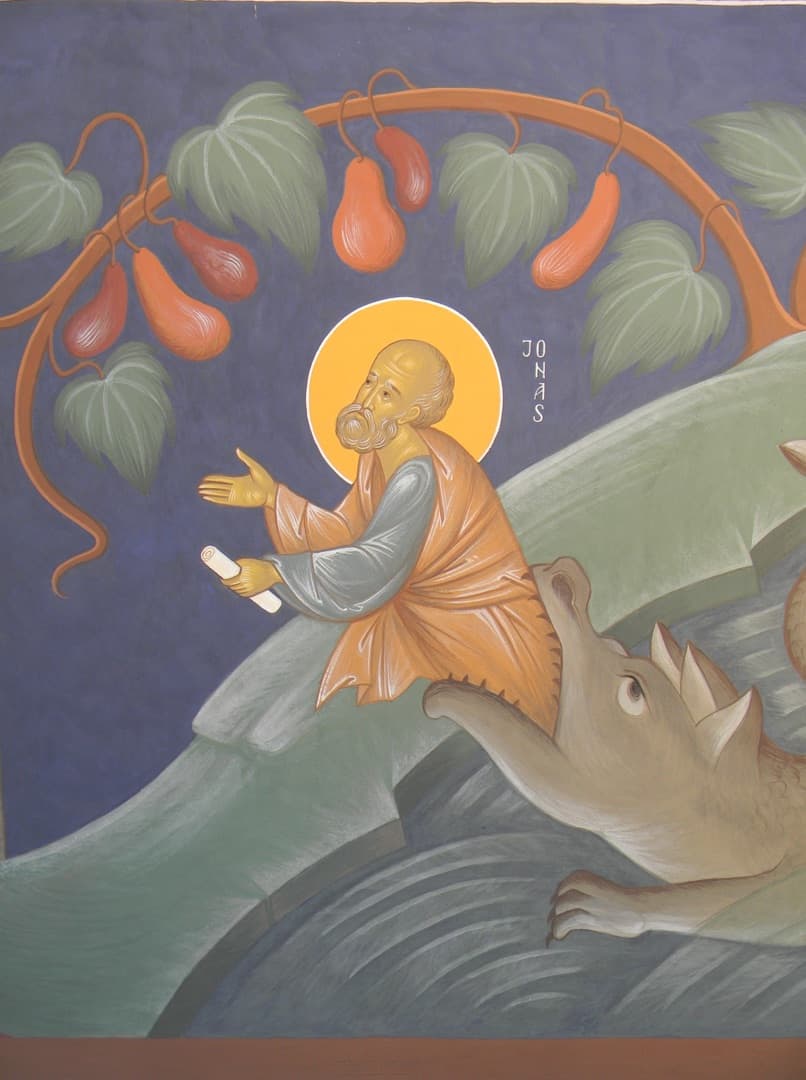
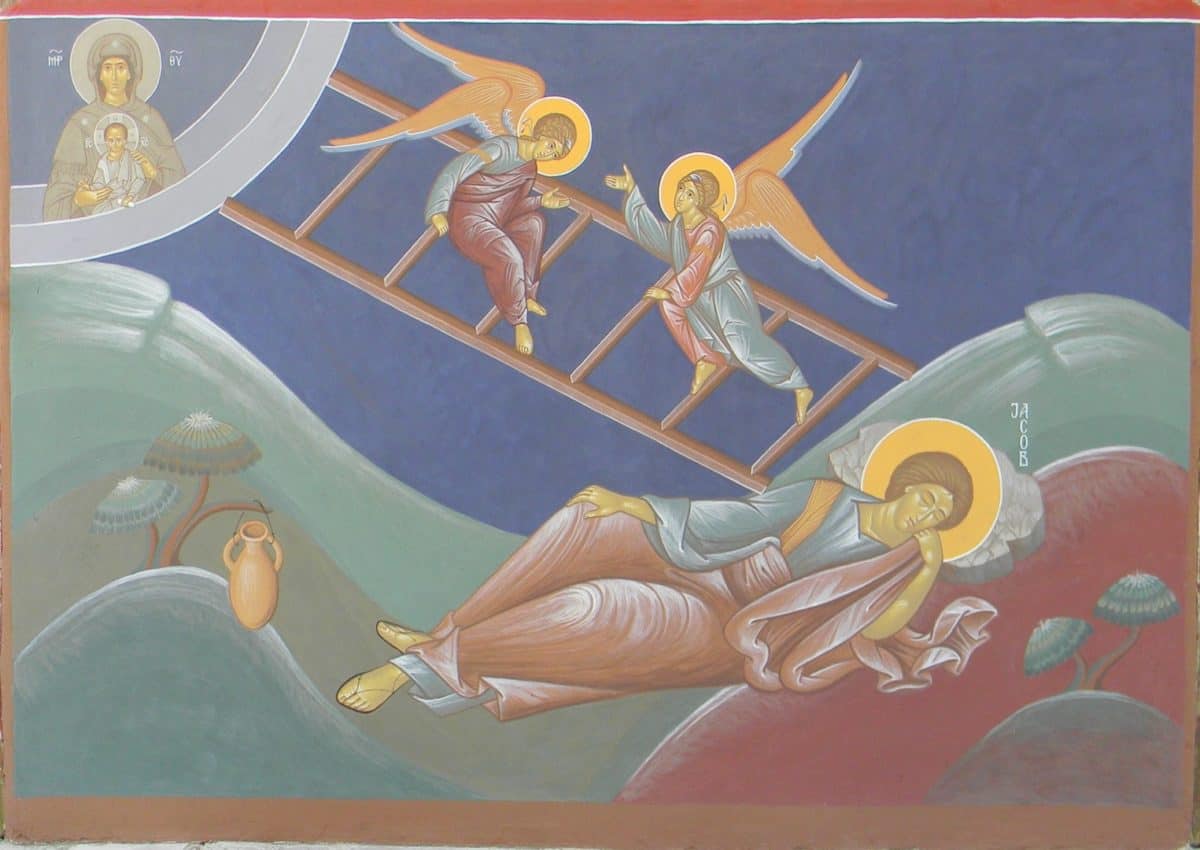

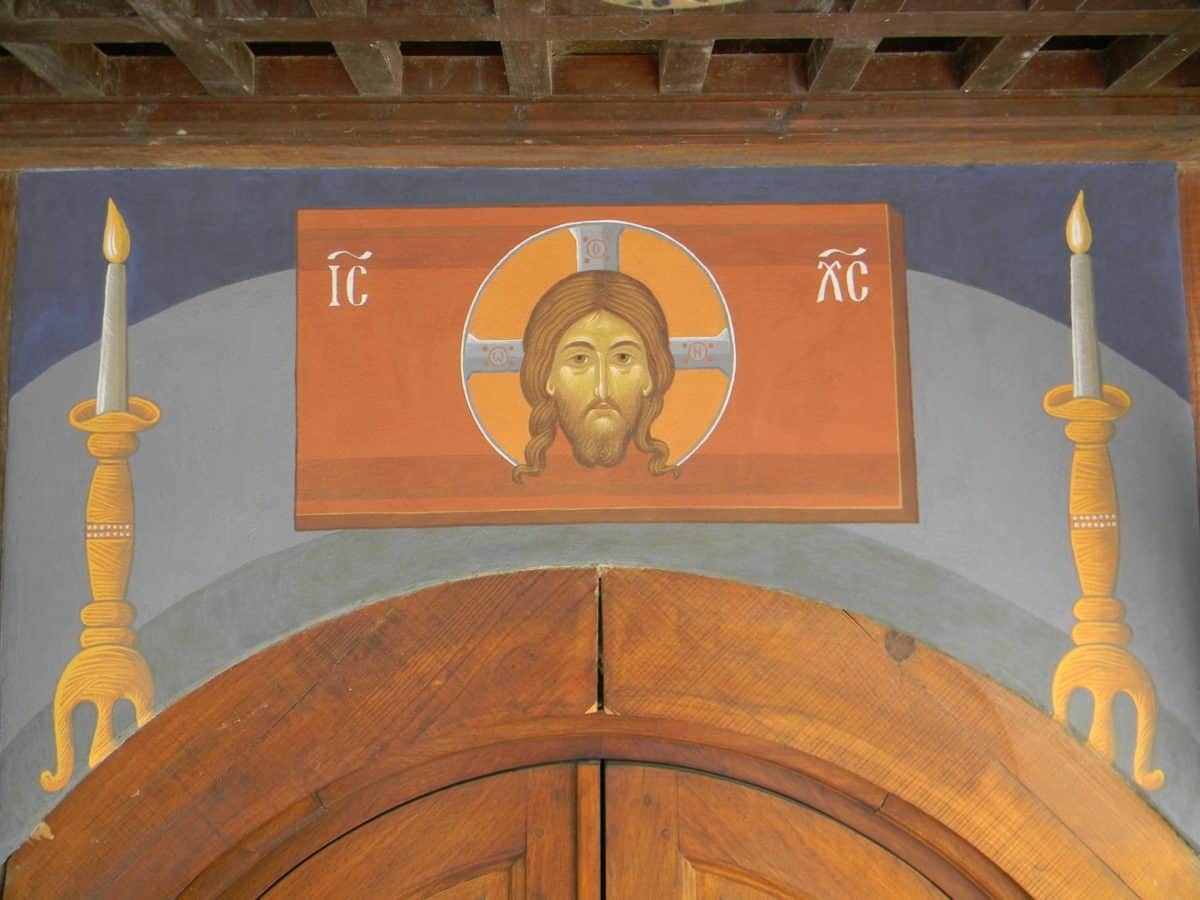
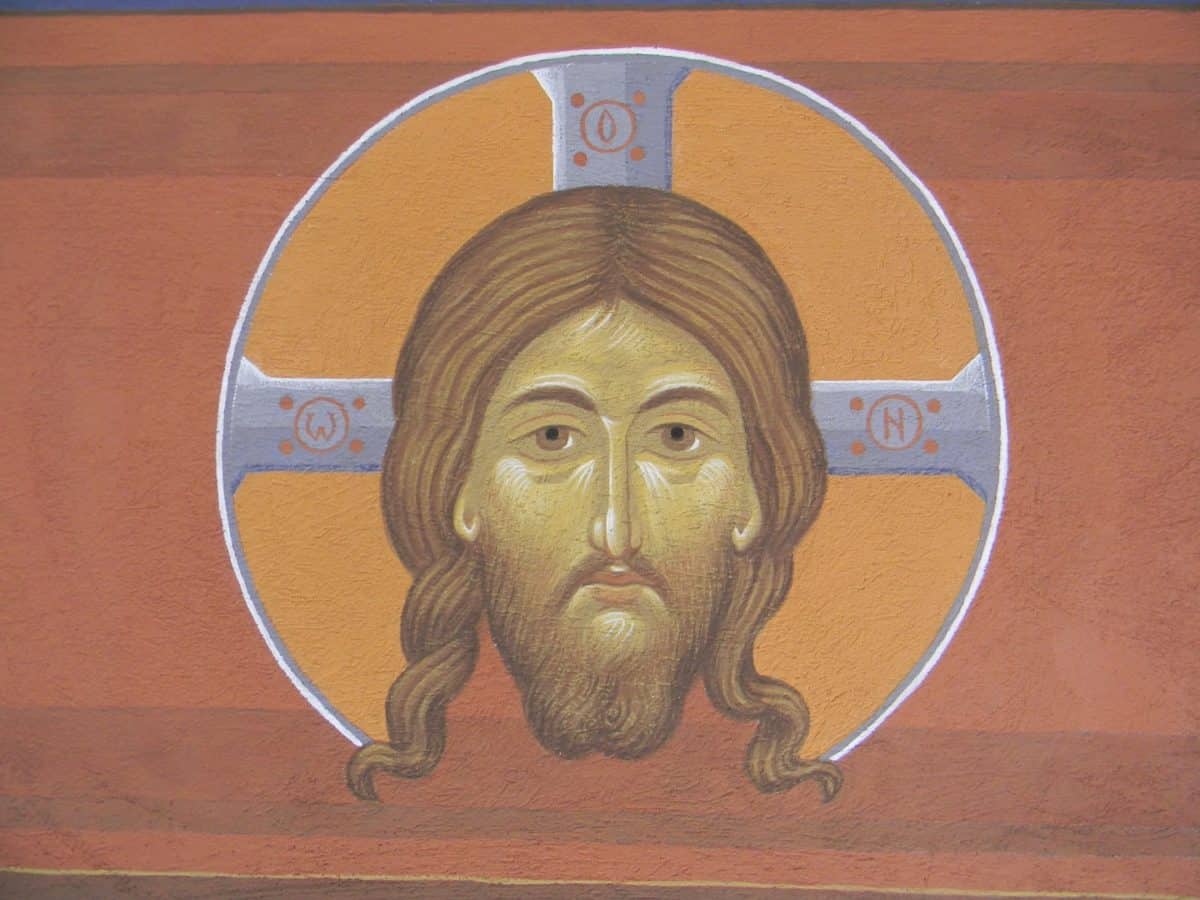
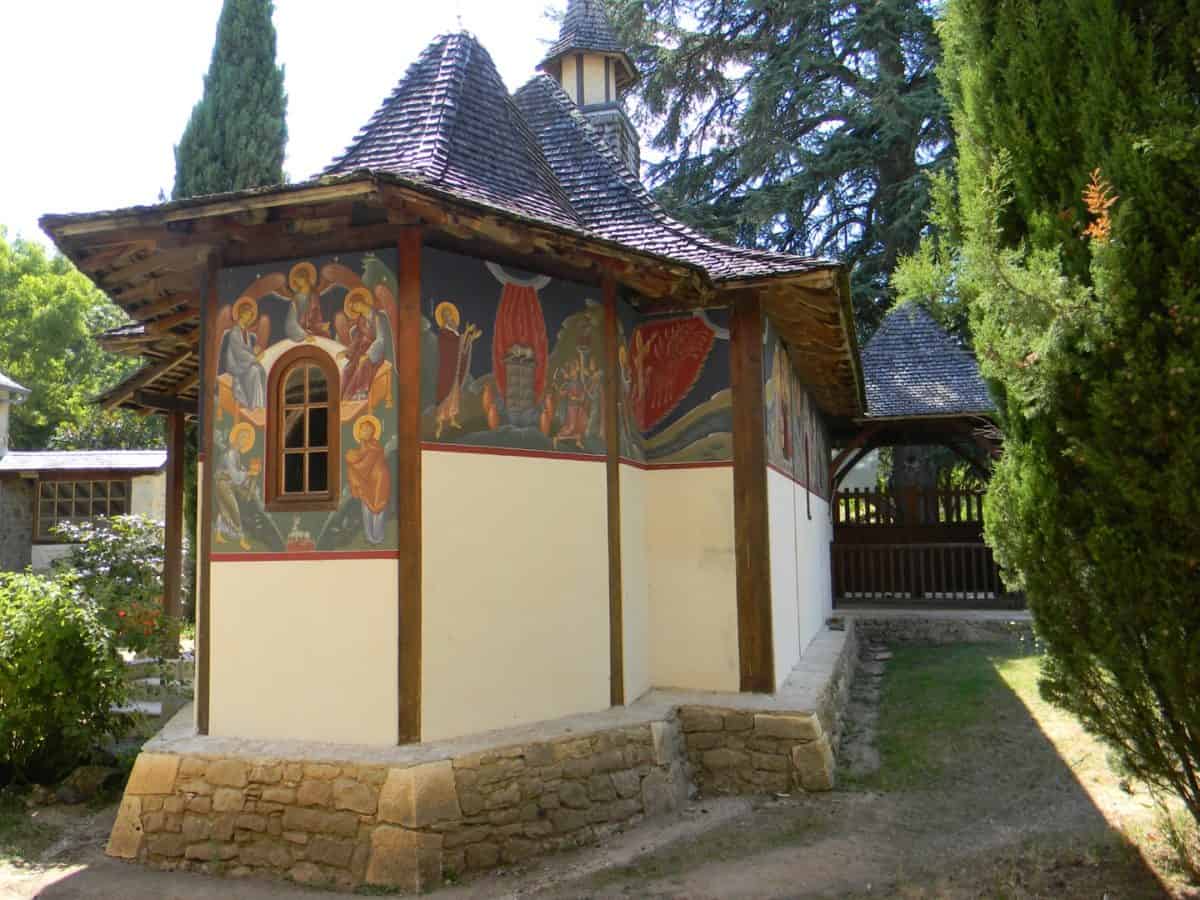
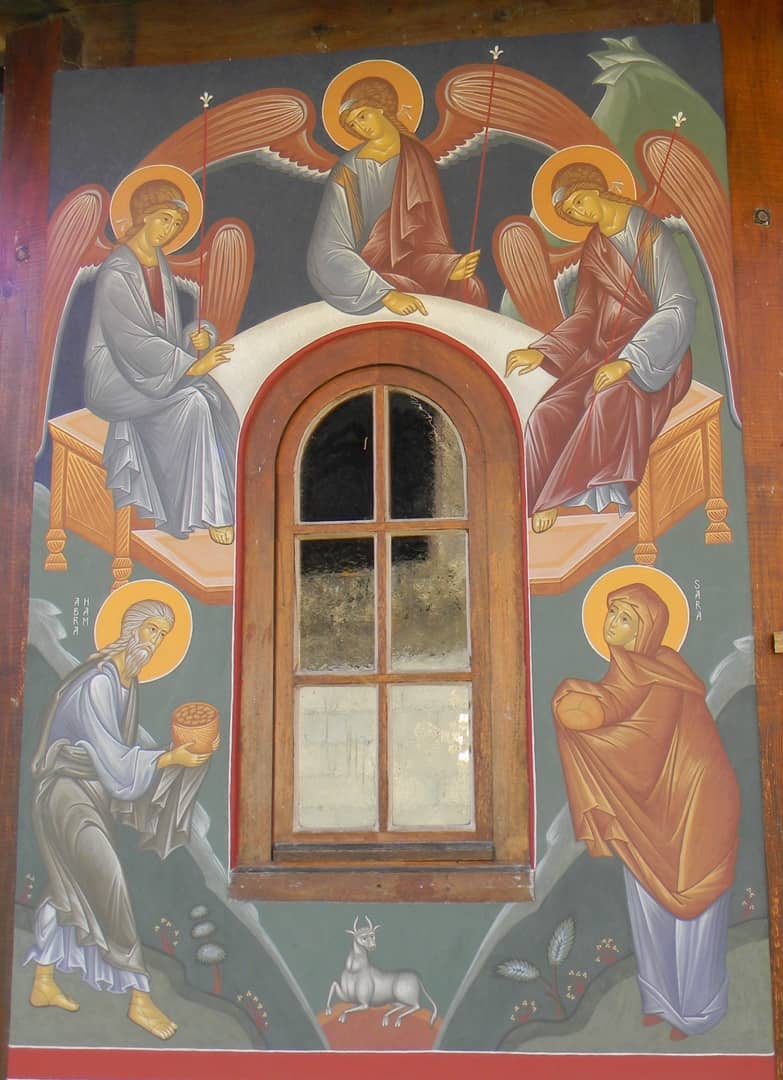
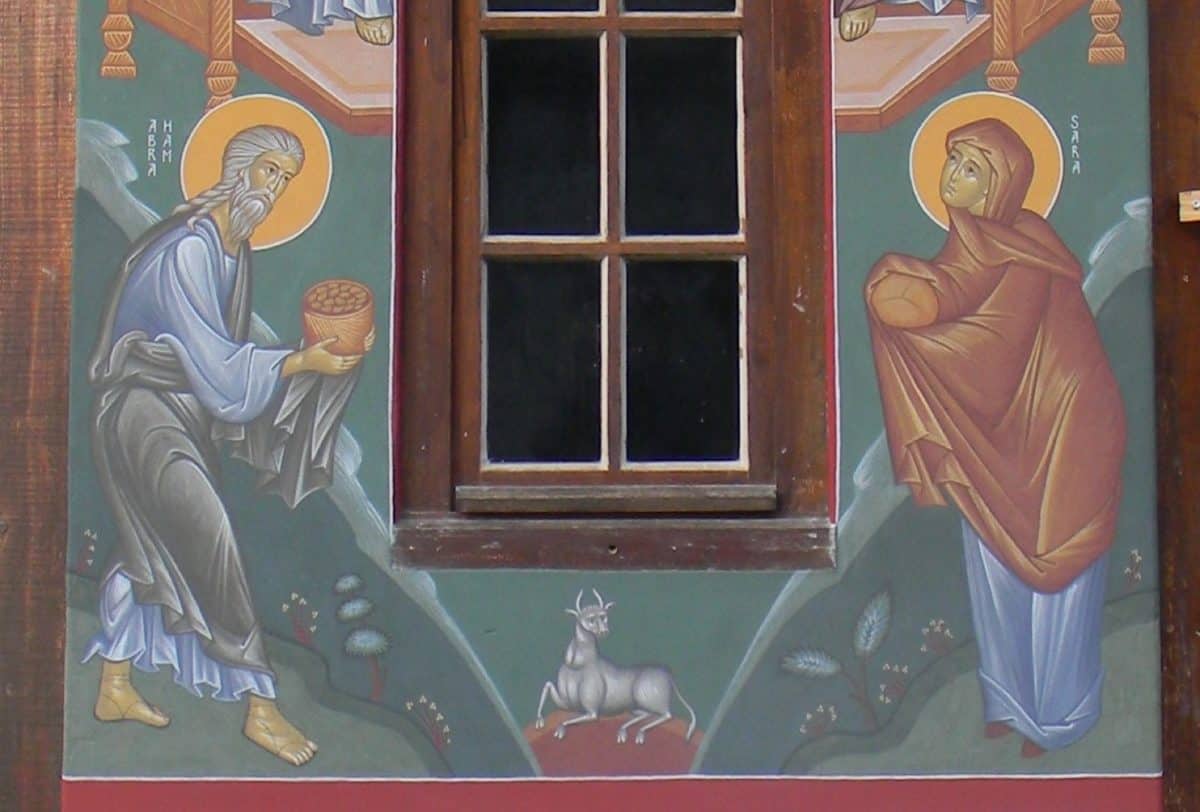
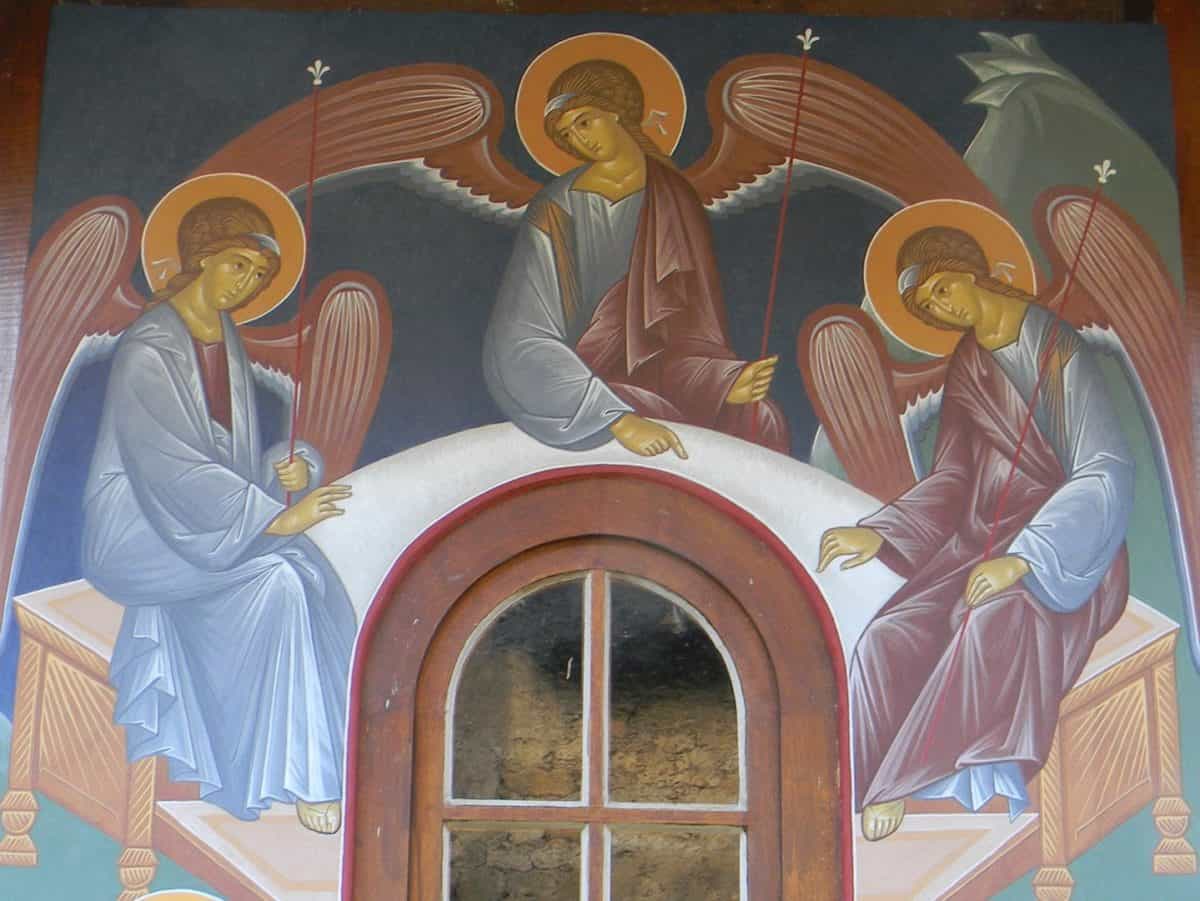
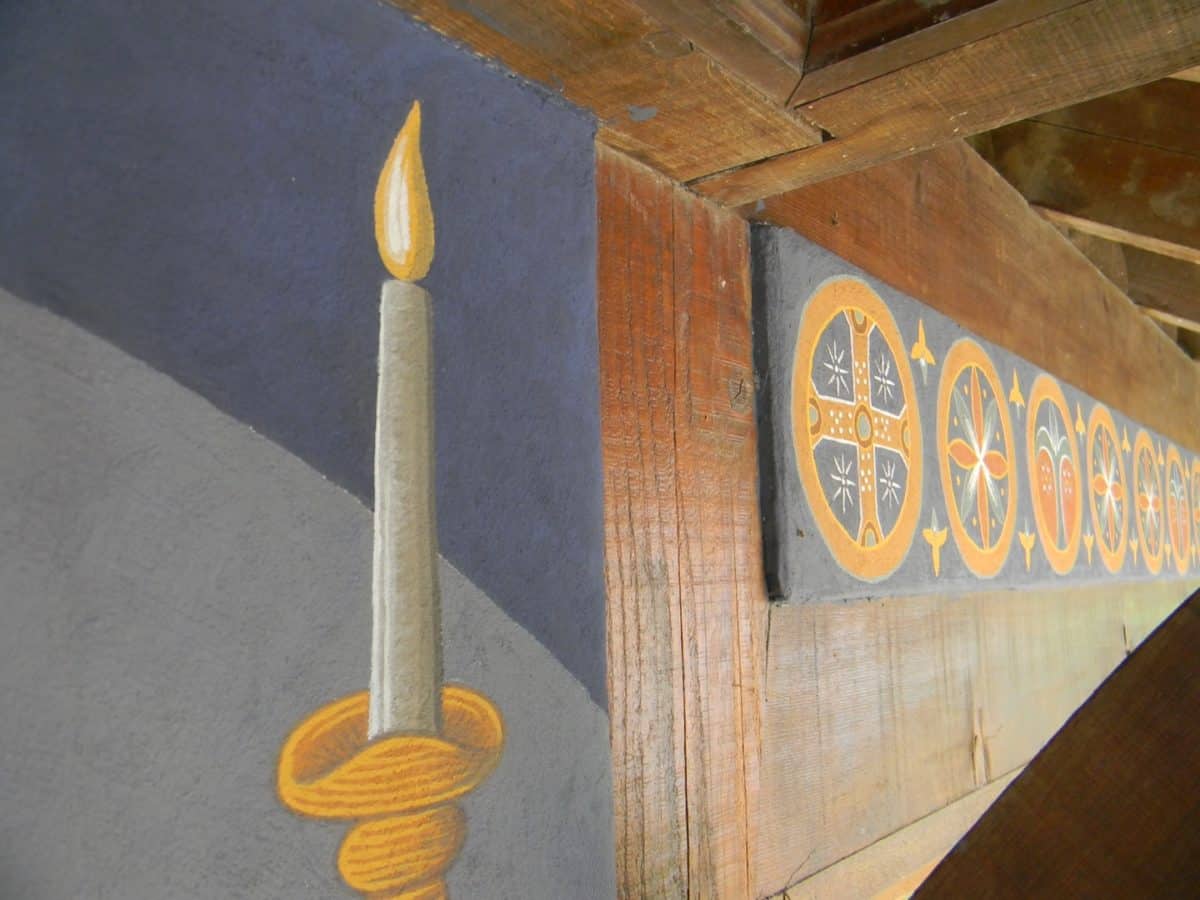
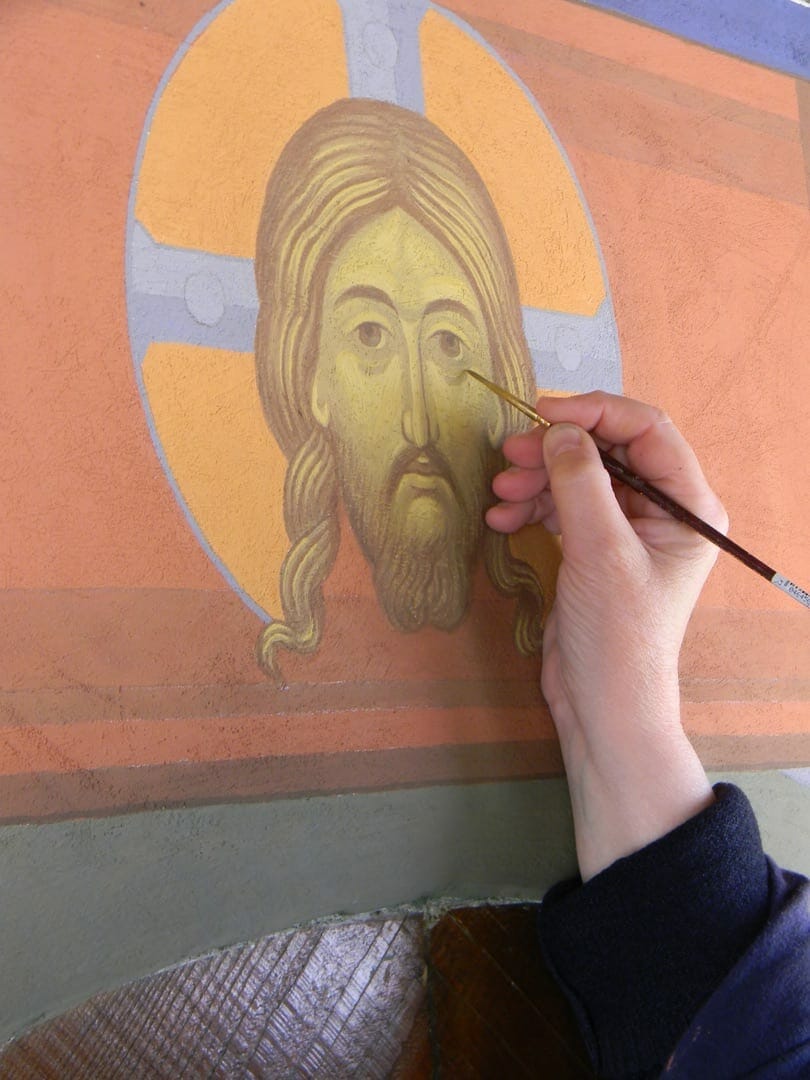
An awesome organic creation.
I really love this project. Lately I’ve been seeing a lot of virtuosic icon painting which seems to be about showing off the painter’s skills. But this painting has an honest robust quality – the sort of character you find in good-hearted country folk. It is such a perfect complement to this humble and yet really beautiful chapel in a rural setting. The more I look at this painting, the more it sticks with me, like something natural and inevitable – artwork without ego. That’s a quality I don’t often find in contemporary work. It’s a great achievement.
I am very touched by your comment. Beyond your compliments I sense that you have perceived in which direction my iconographic work moves, that is, not searching for technical accomplishments but to render the image as simple as the biblical text which it refers to. And this chapel is very simple, far from the architectural complexes (or intricate structures) of the great cities. Thank you for having welcomed the publication of this project in your journal.
Nestling harmoniously amidst the surrounding landscape, this architectural gem of a chapel is fittingly embraced by Hélène Bléré’s glorious frieze, a labour of love and image of Heaven upon earth. Thank you.